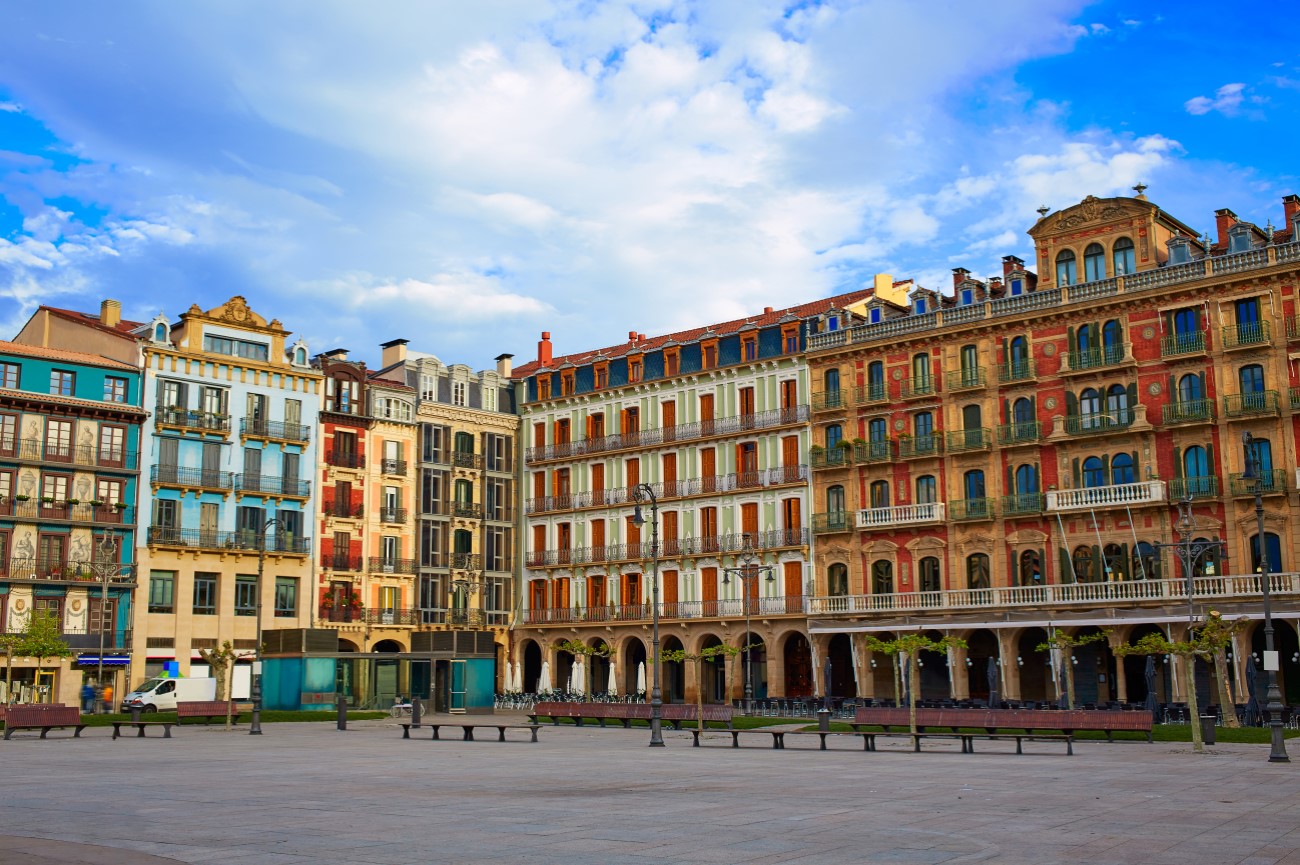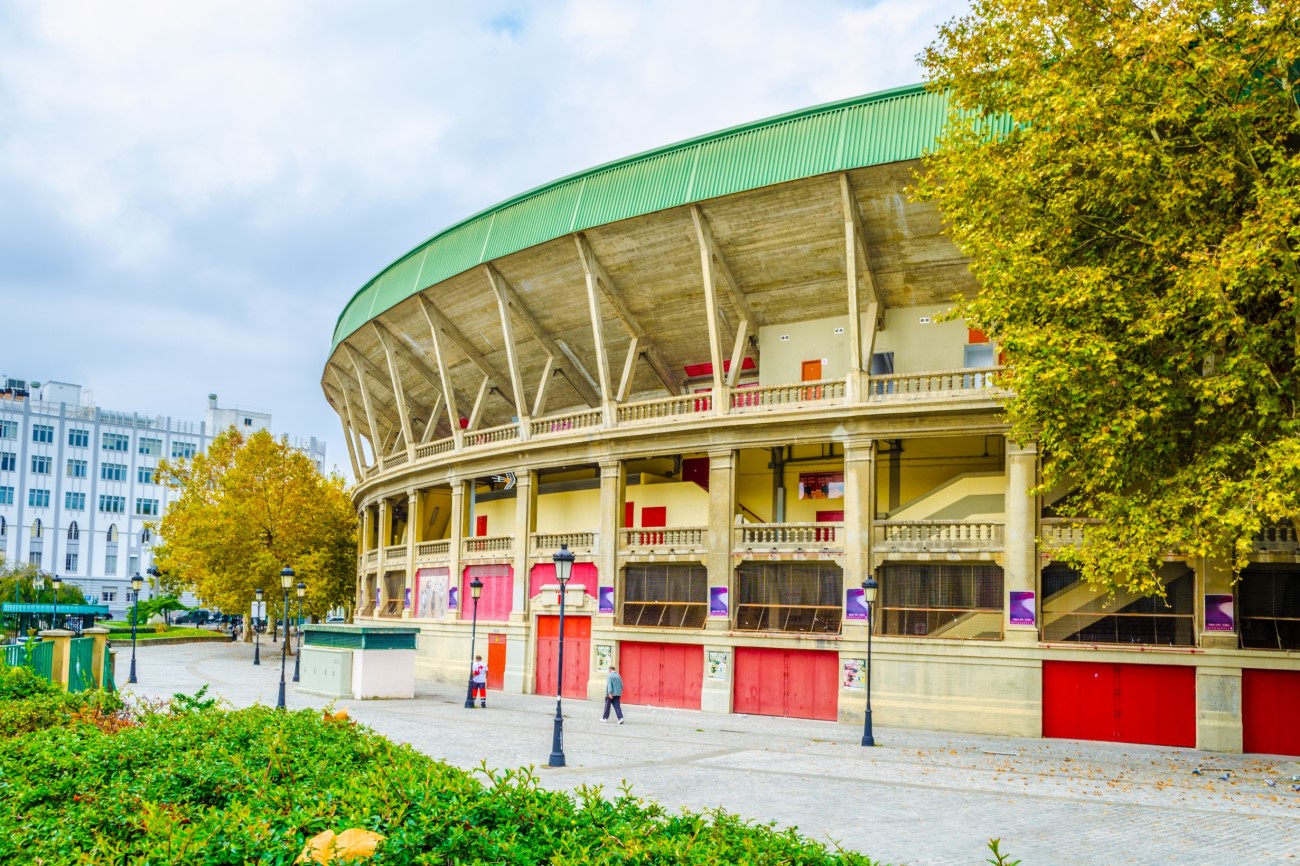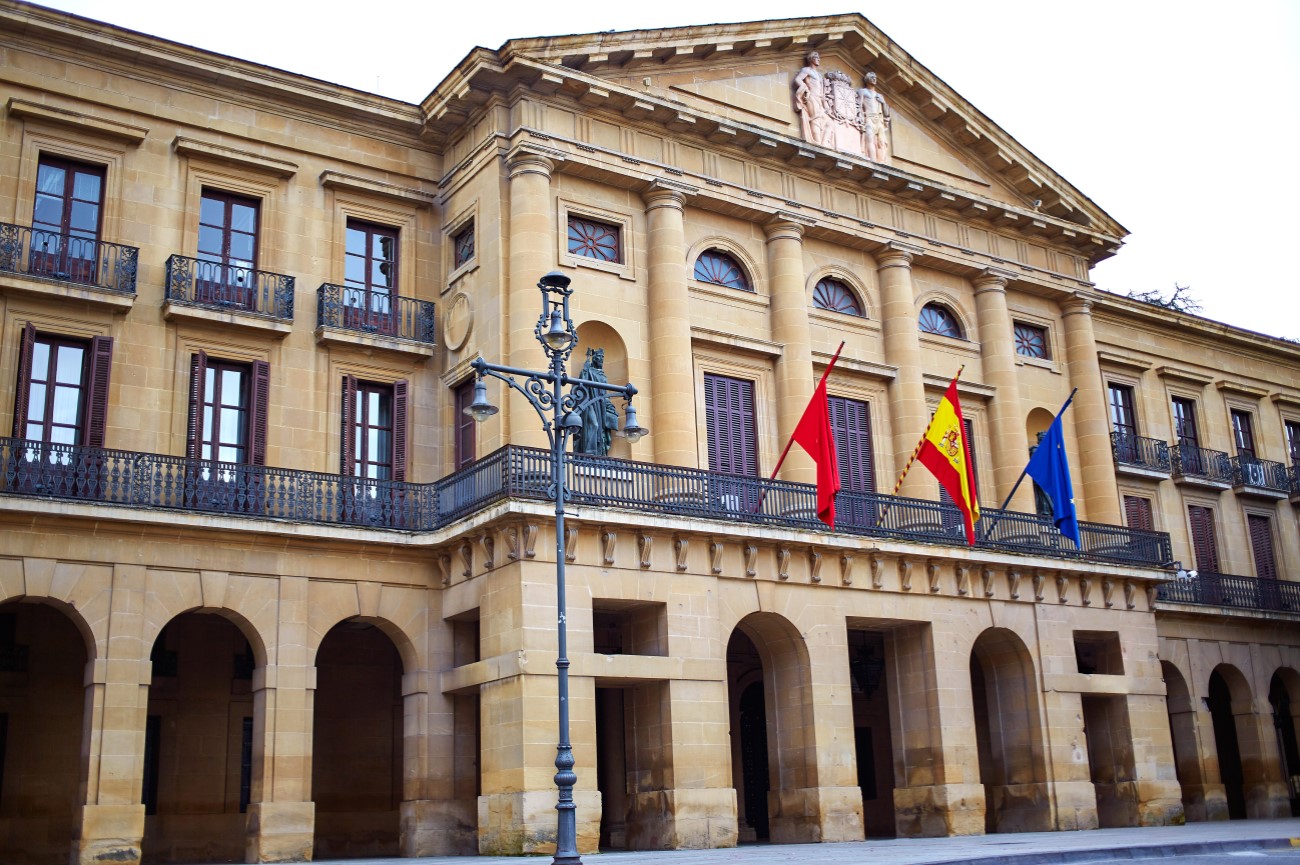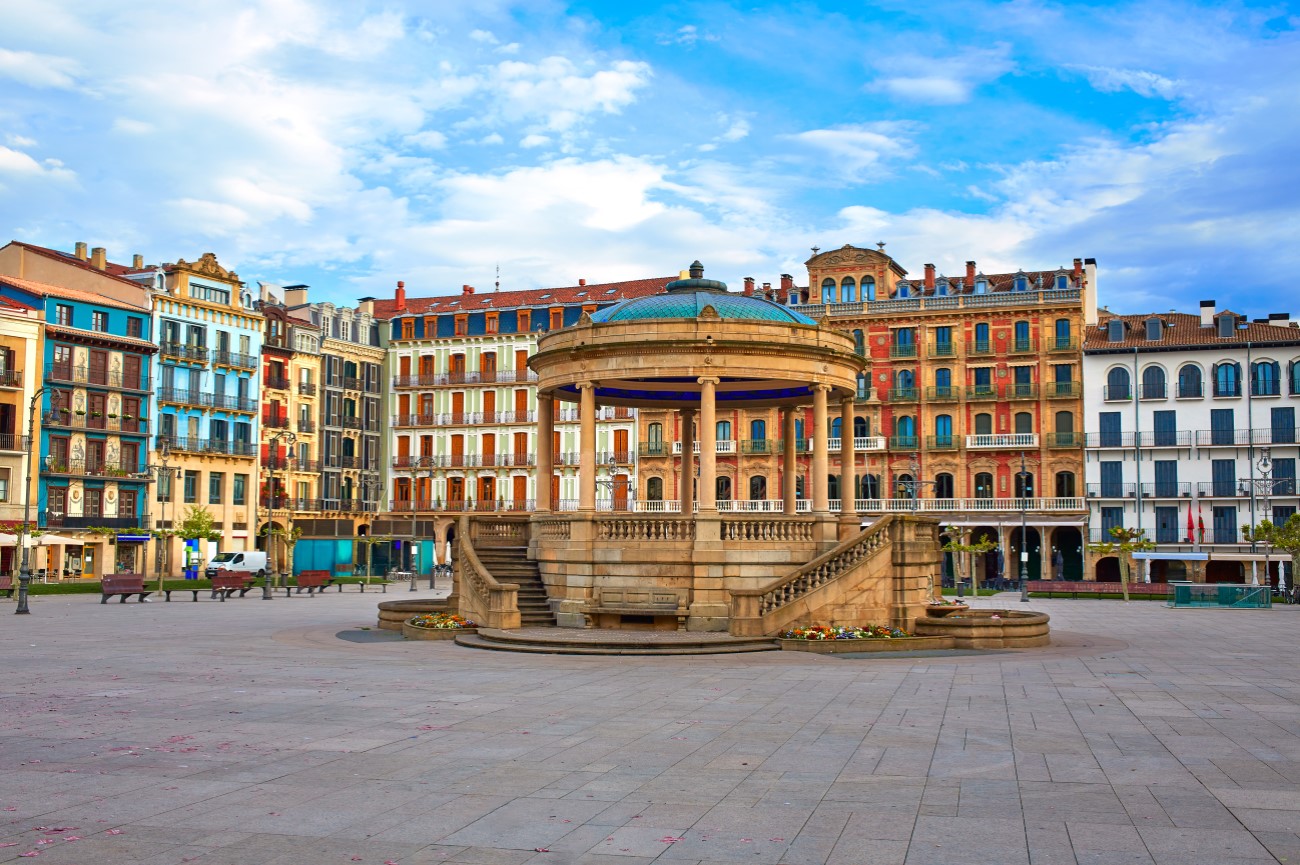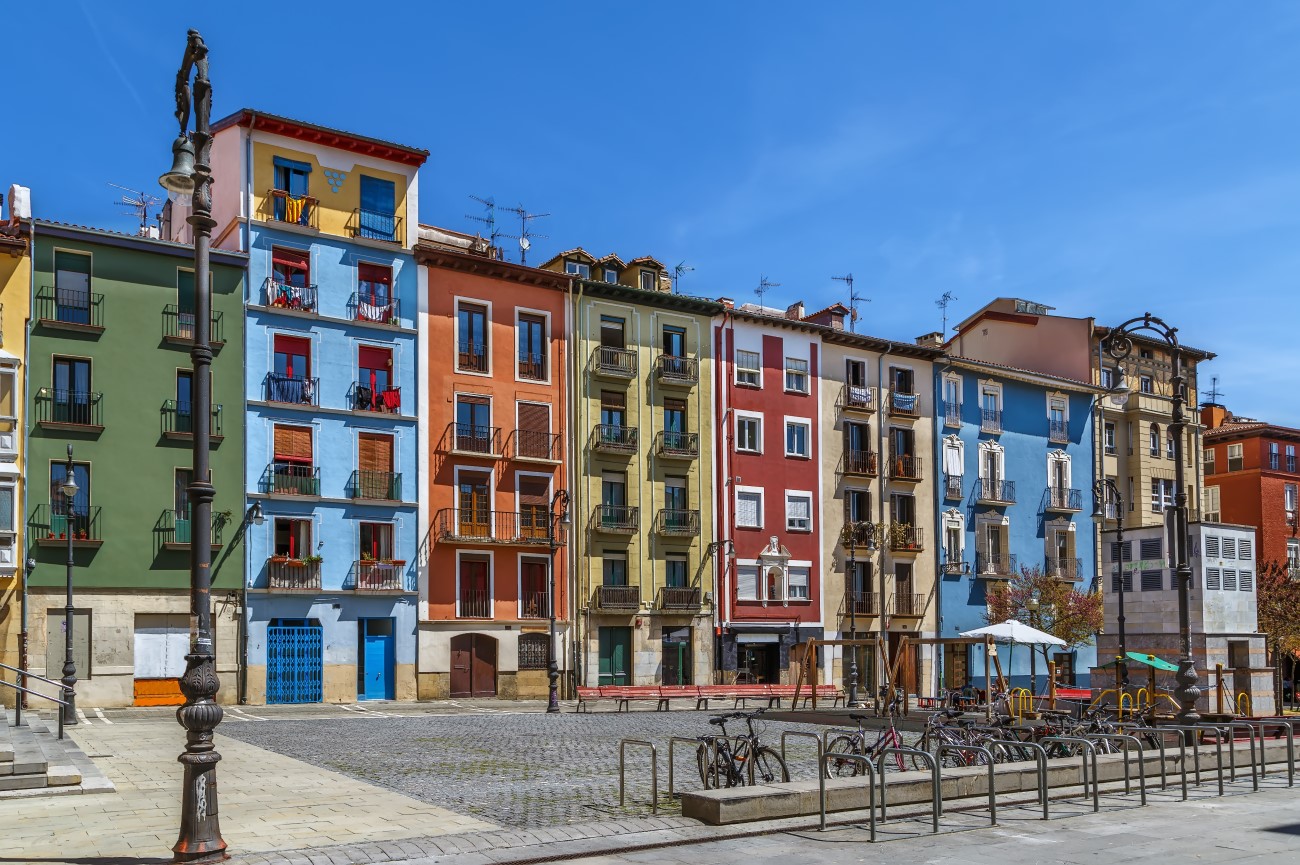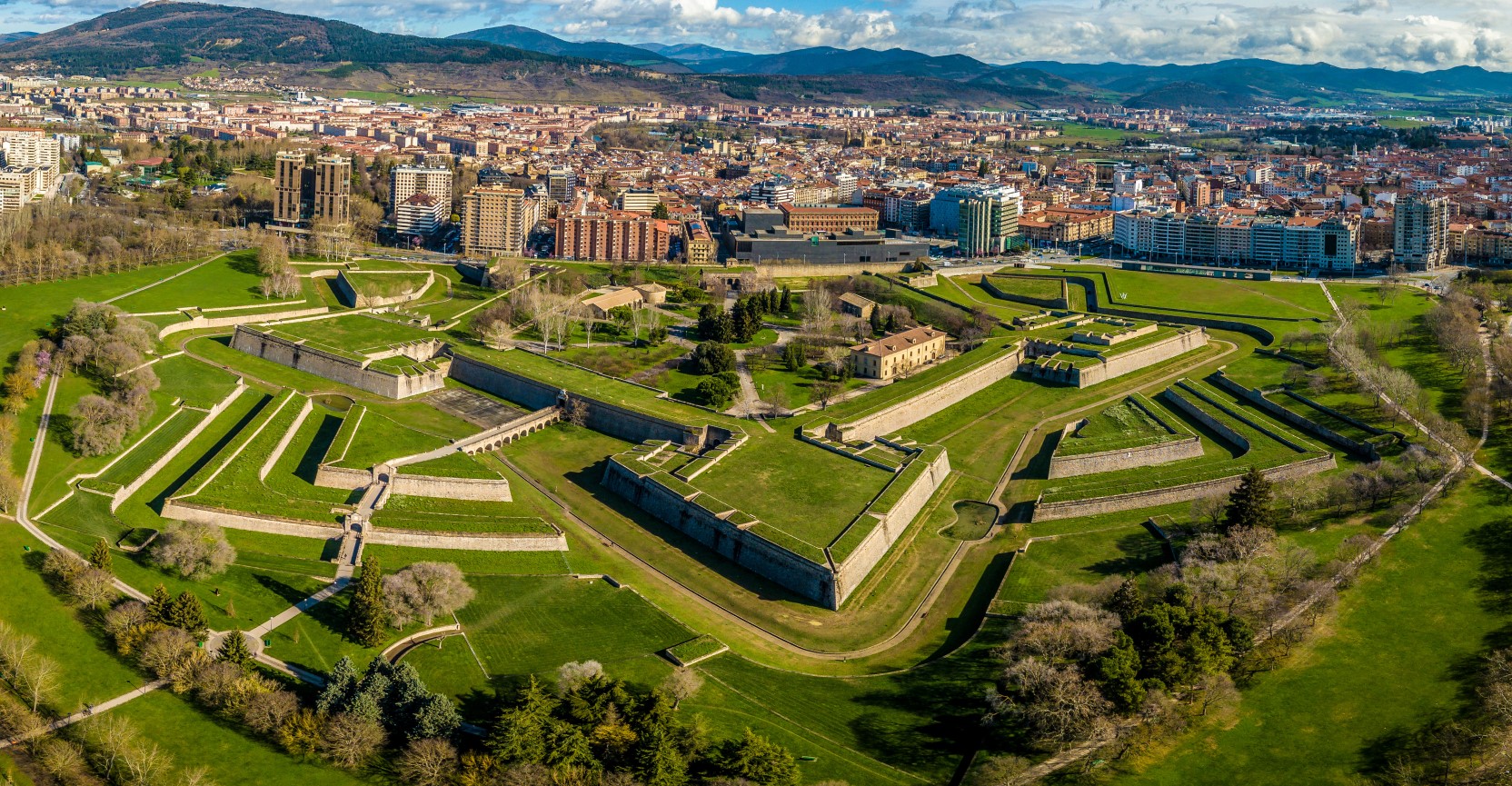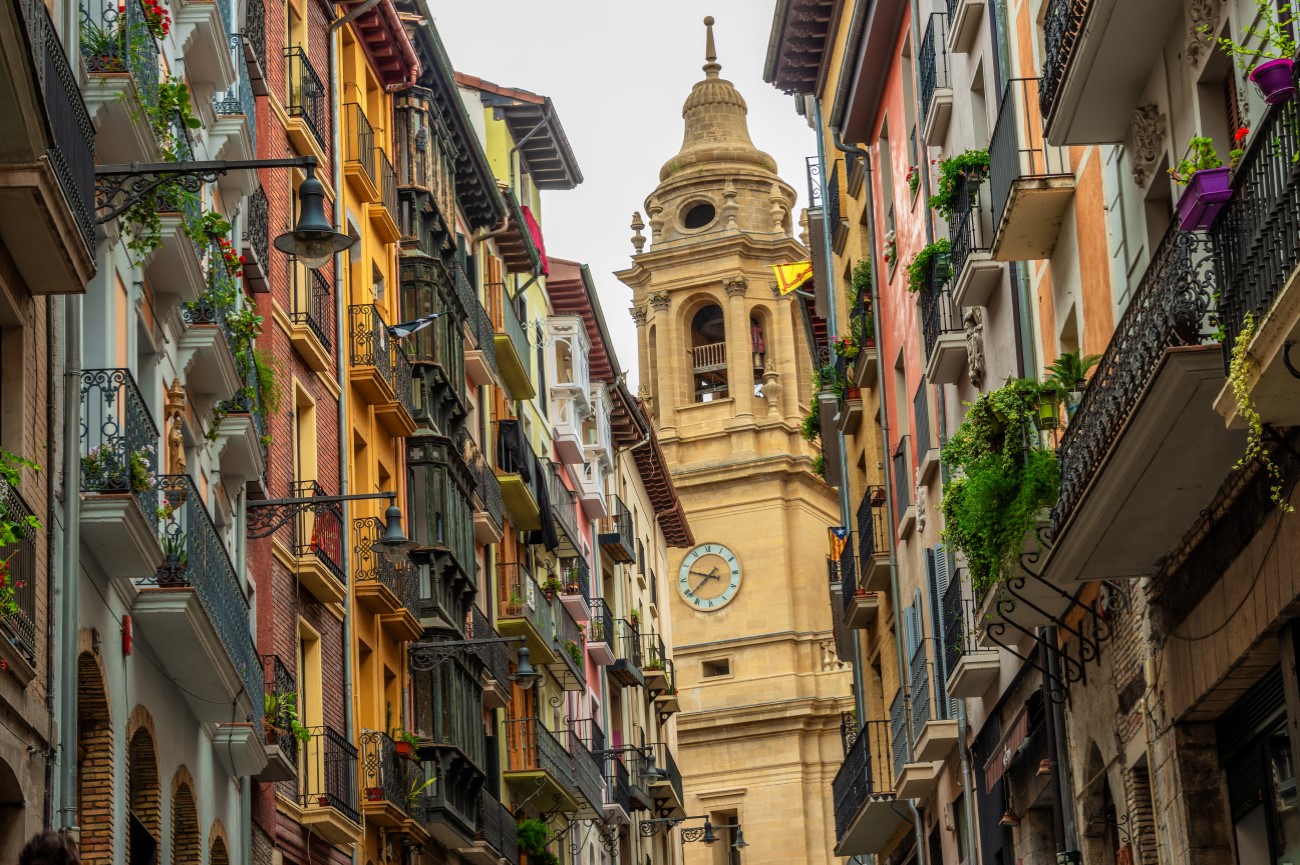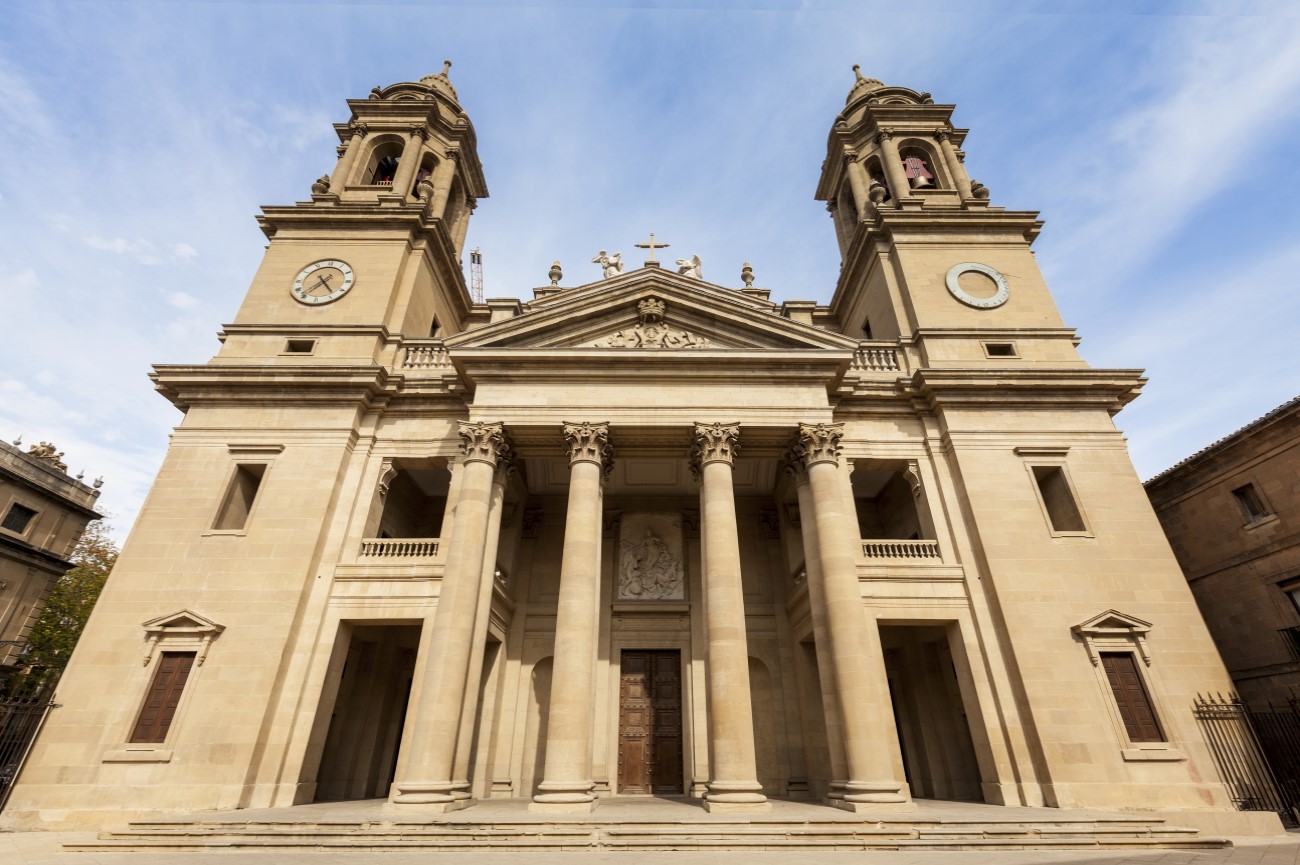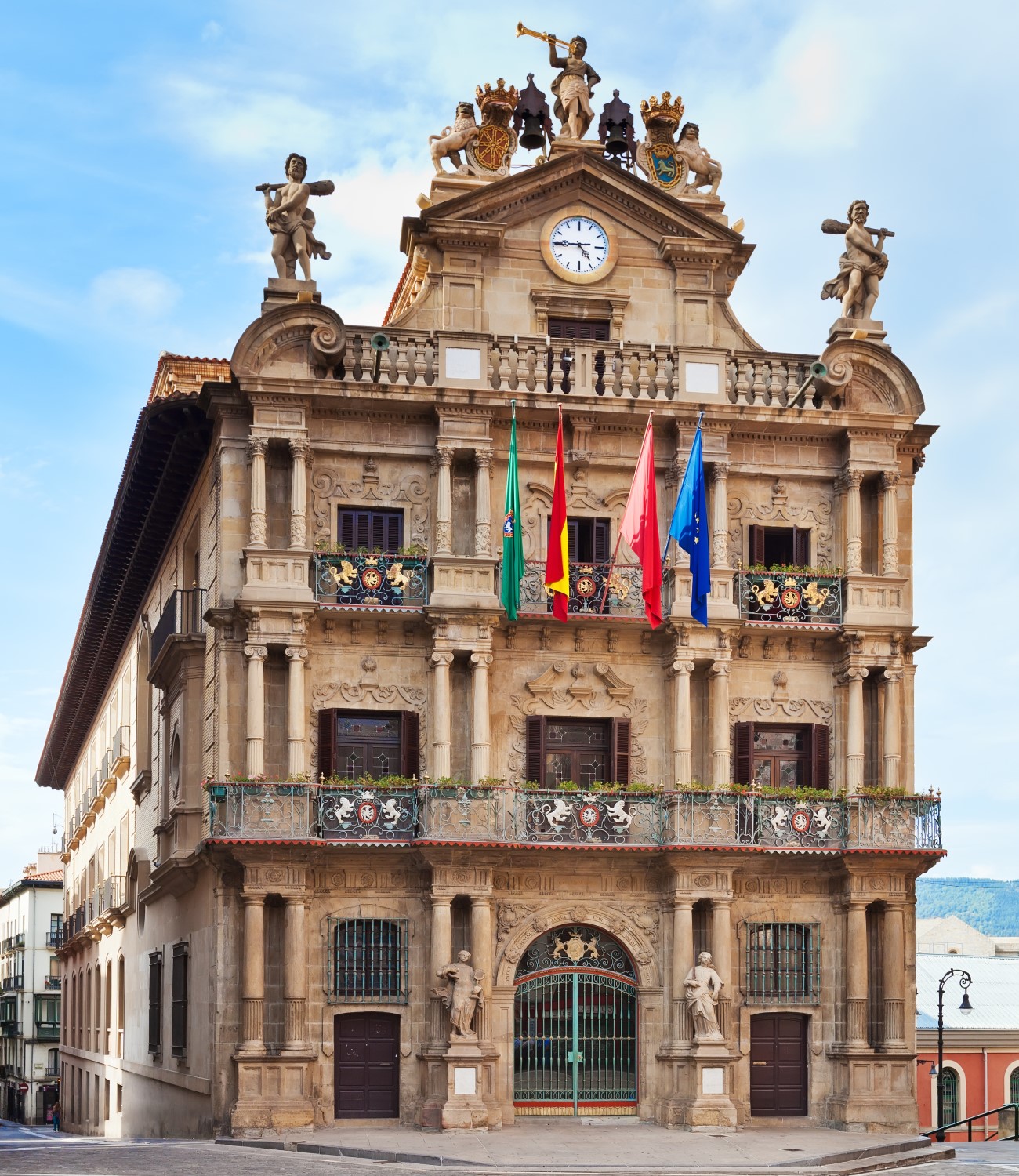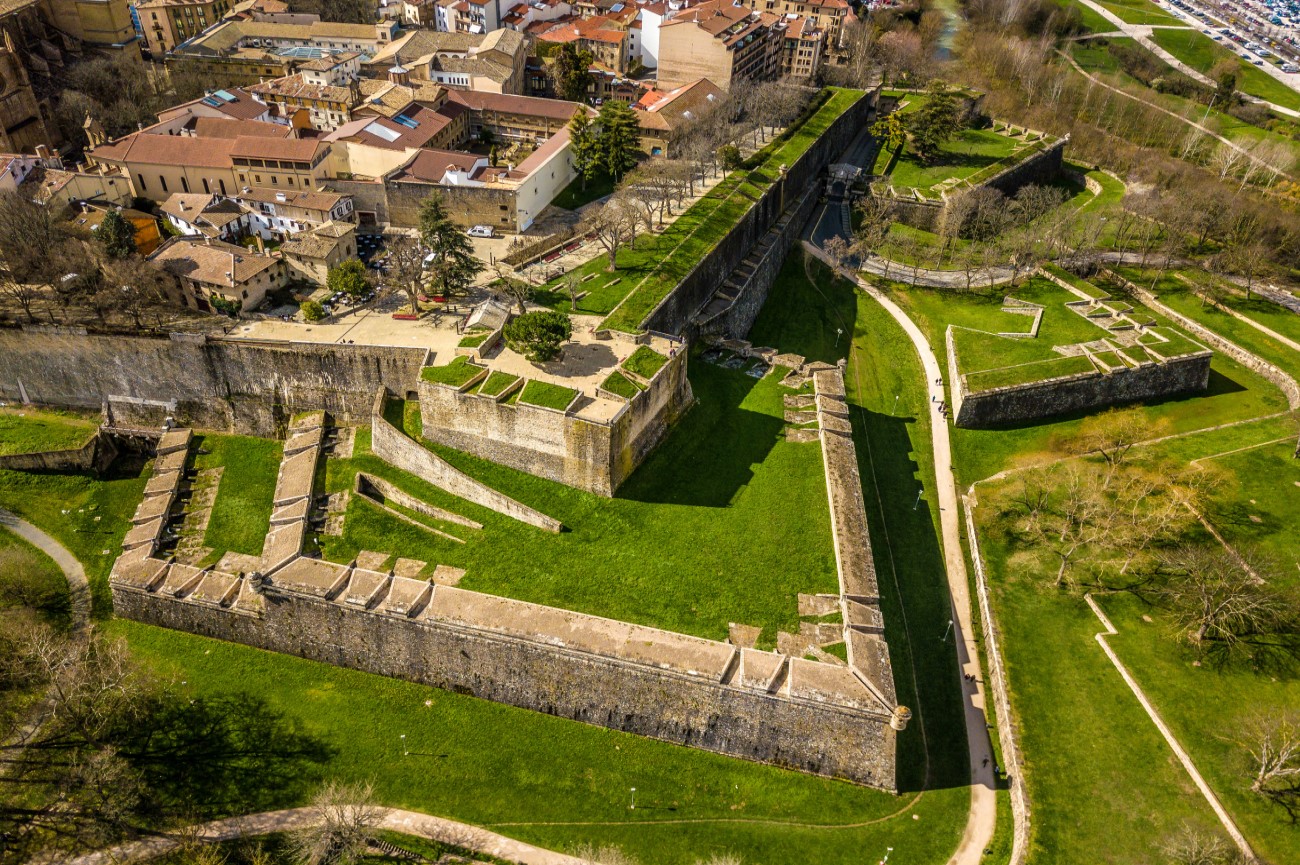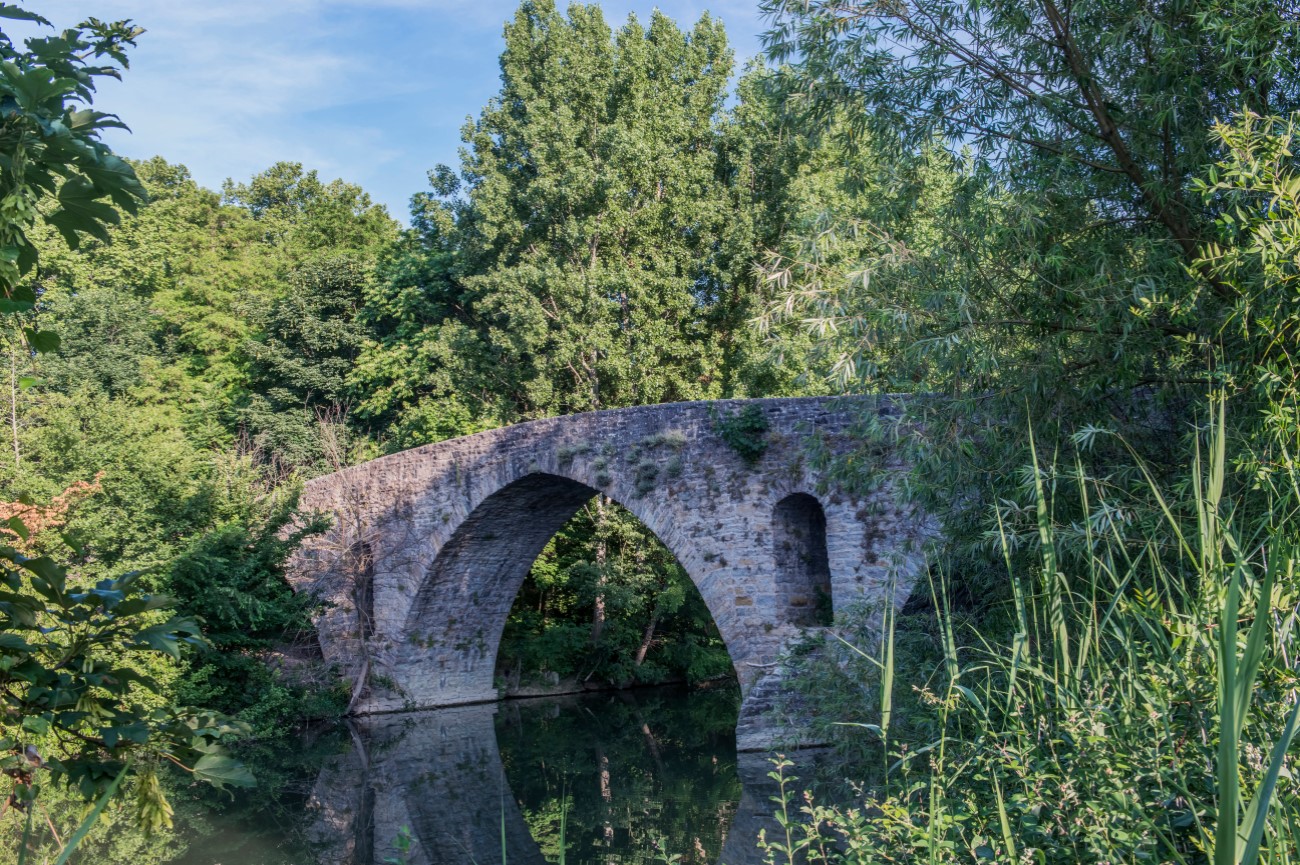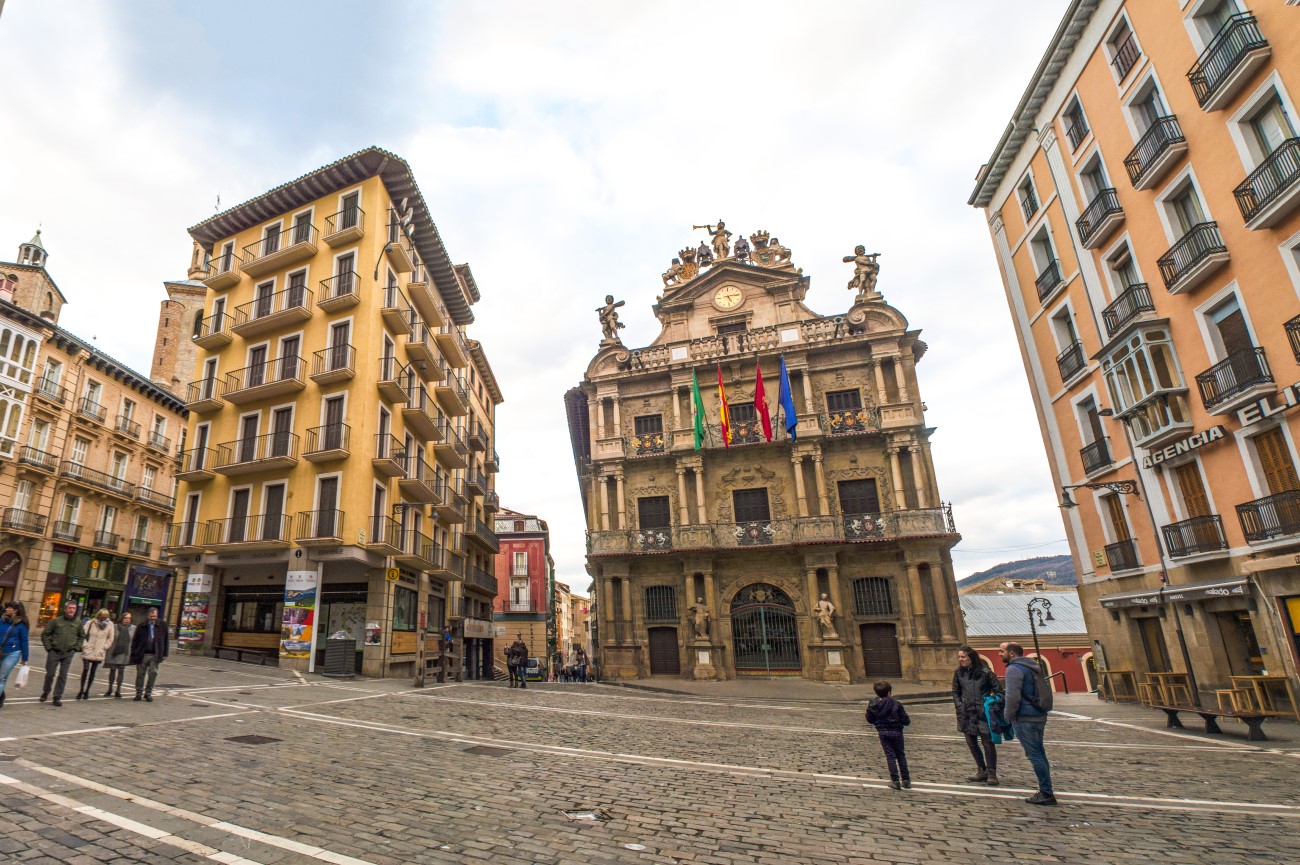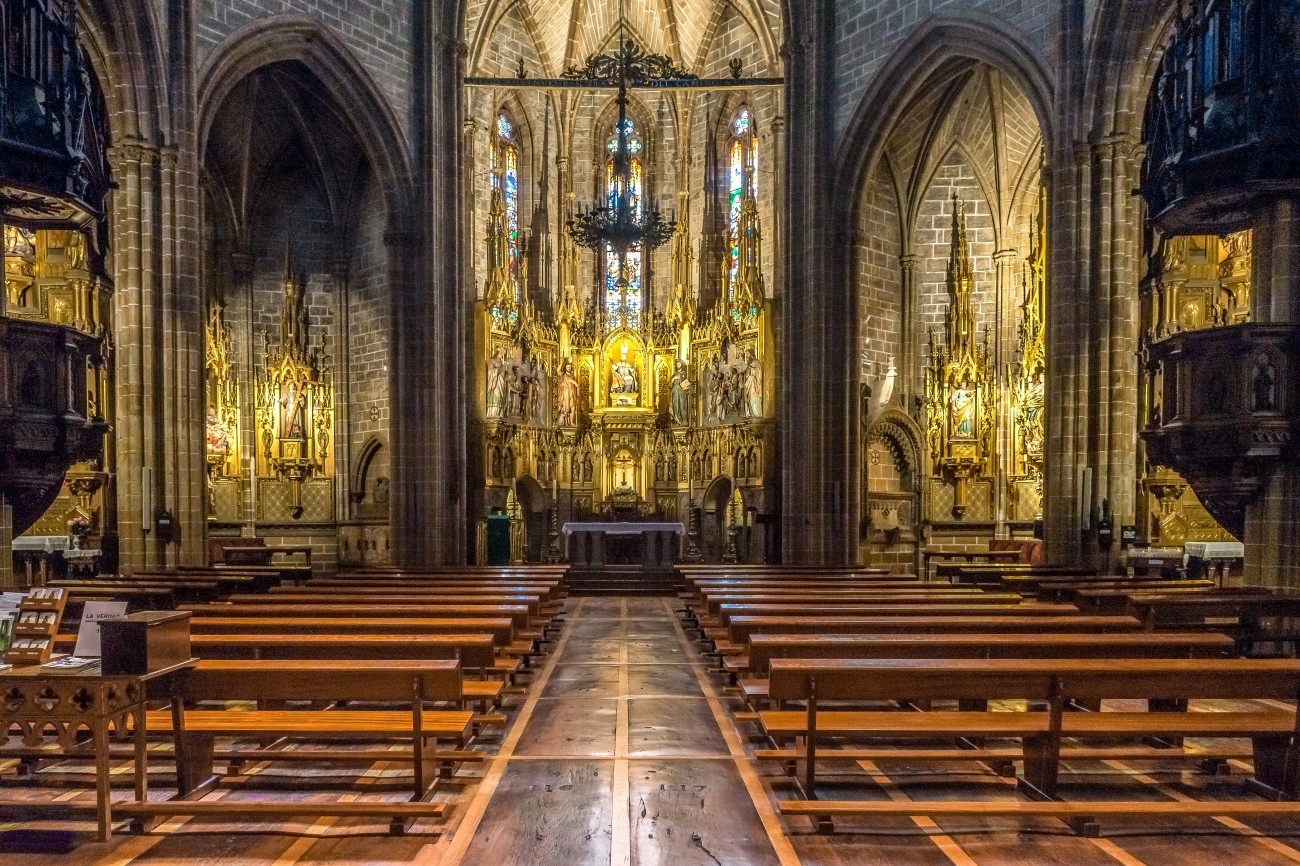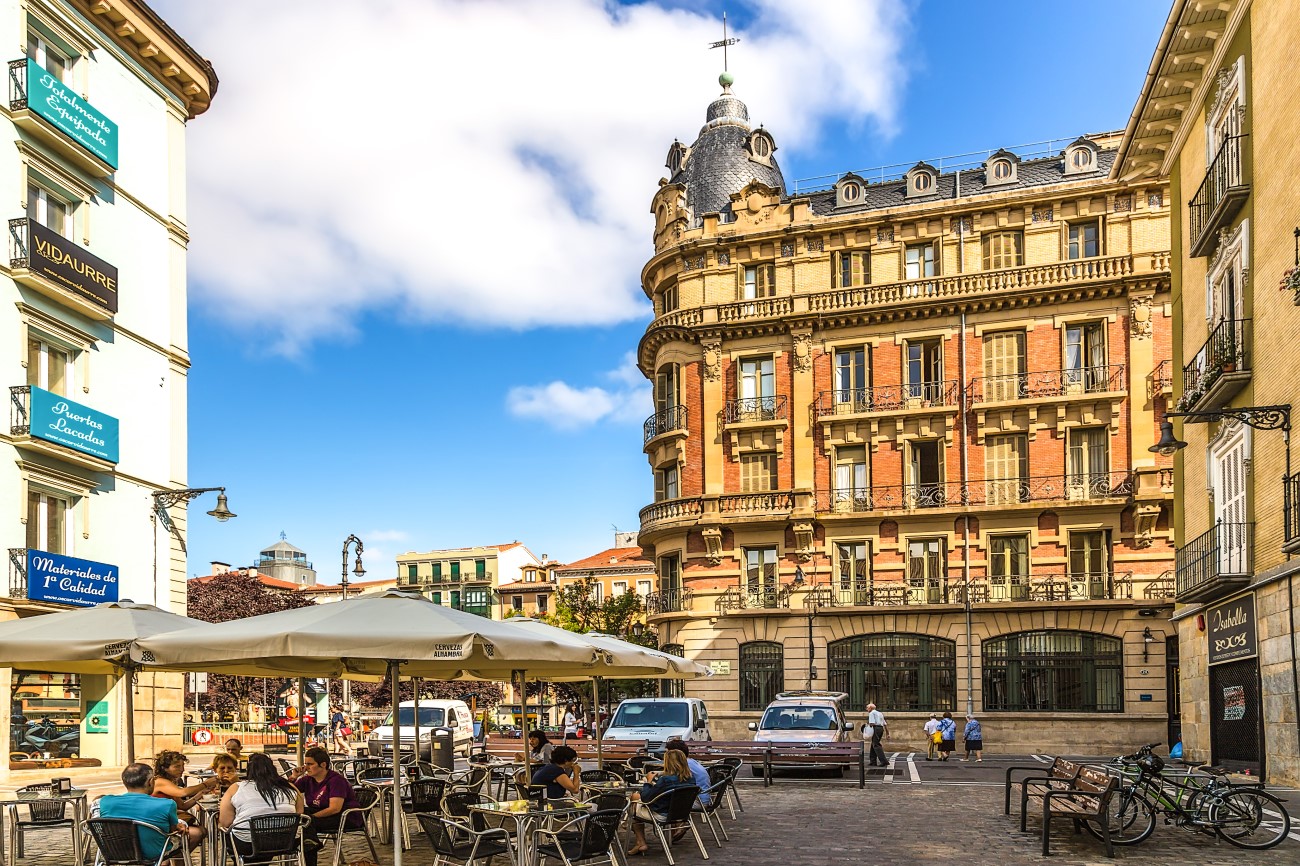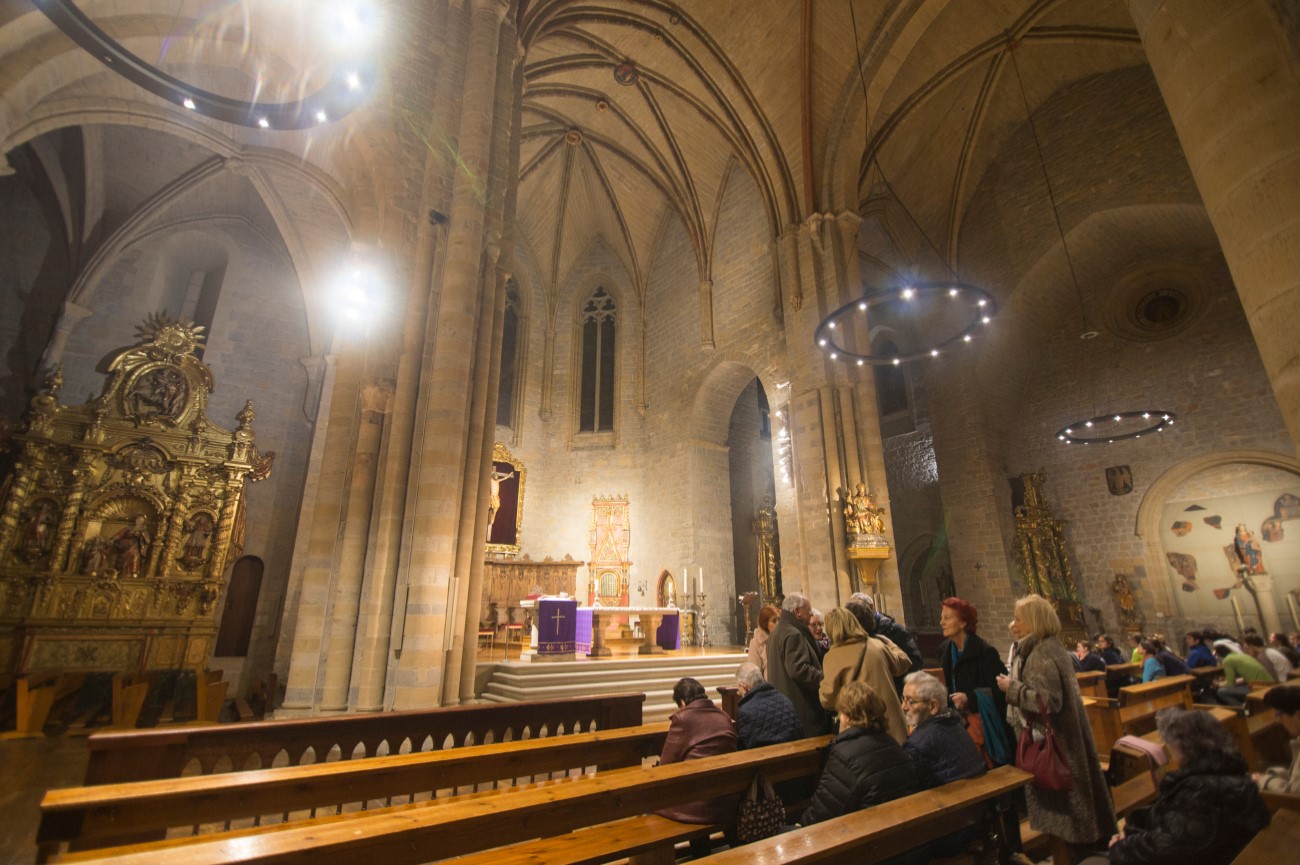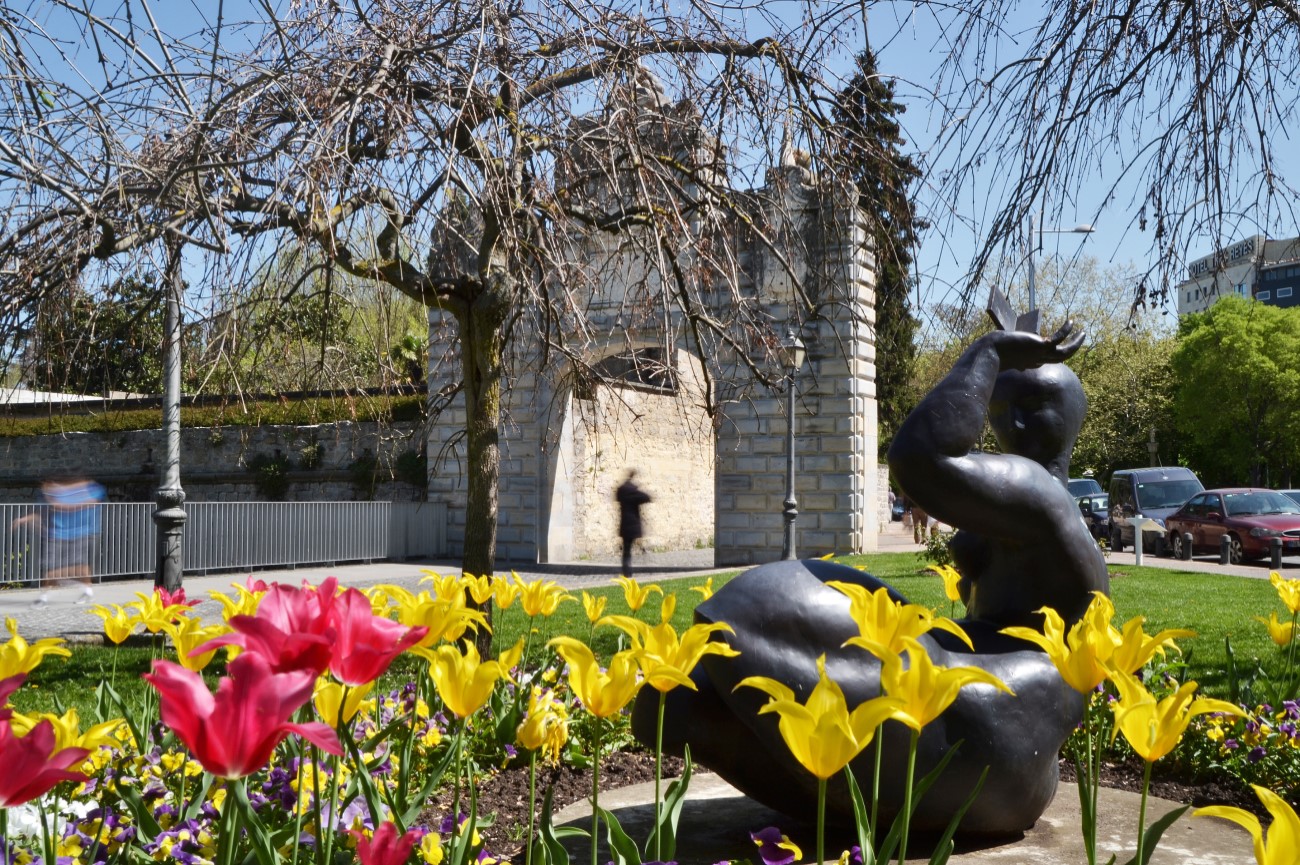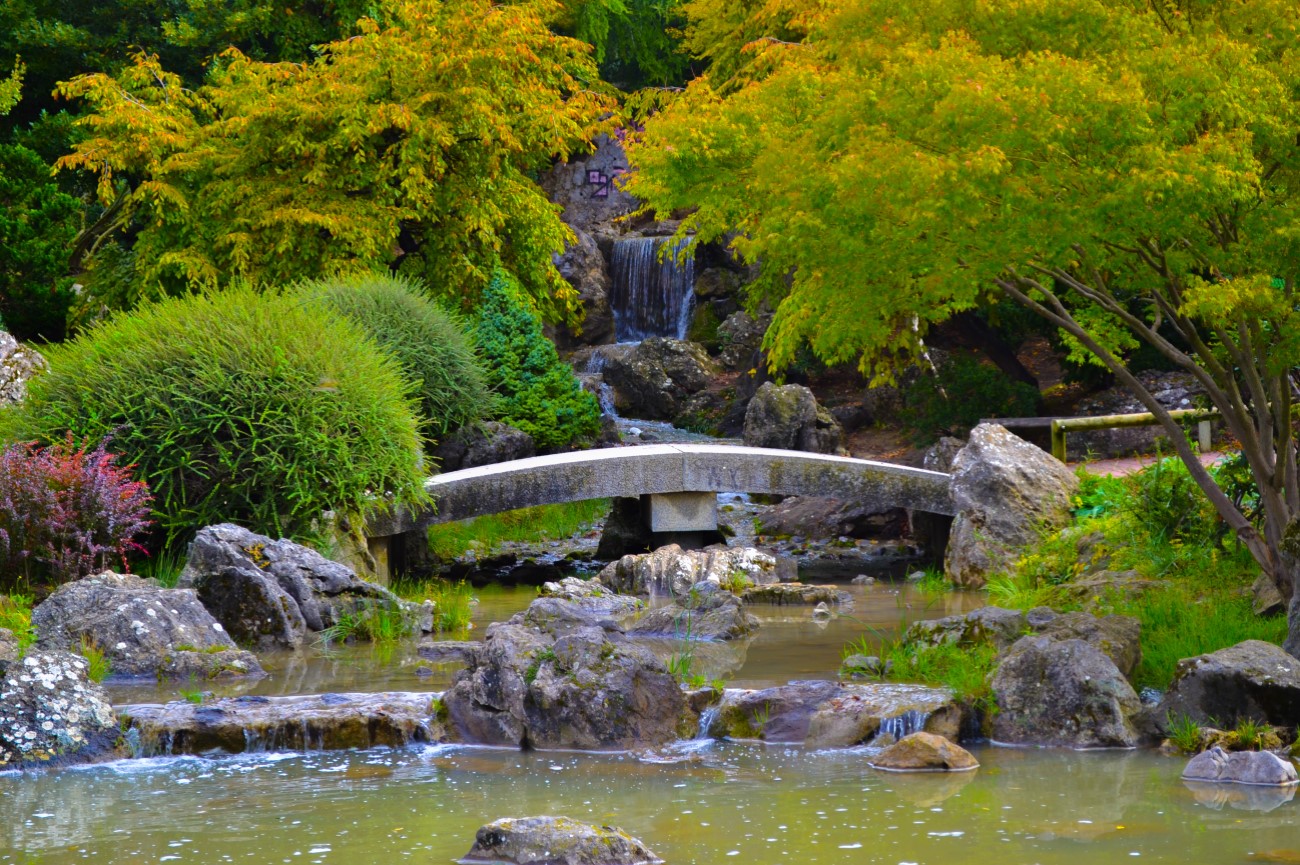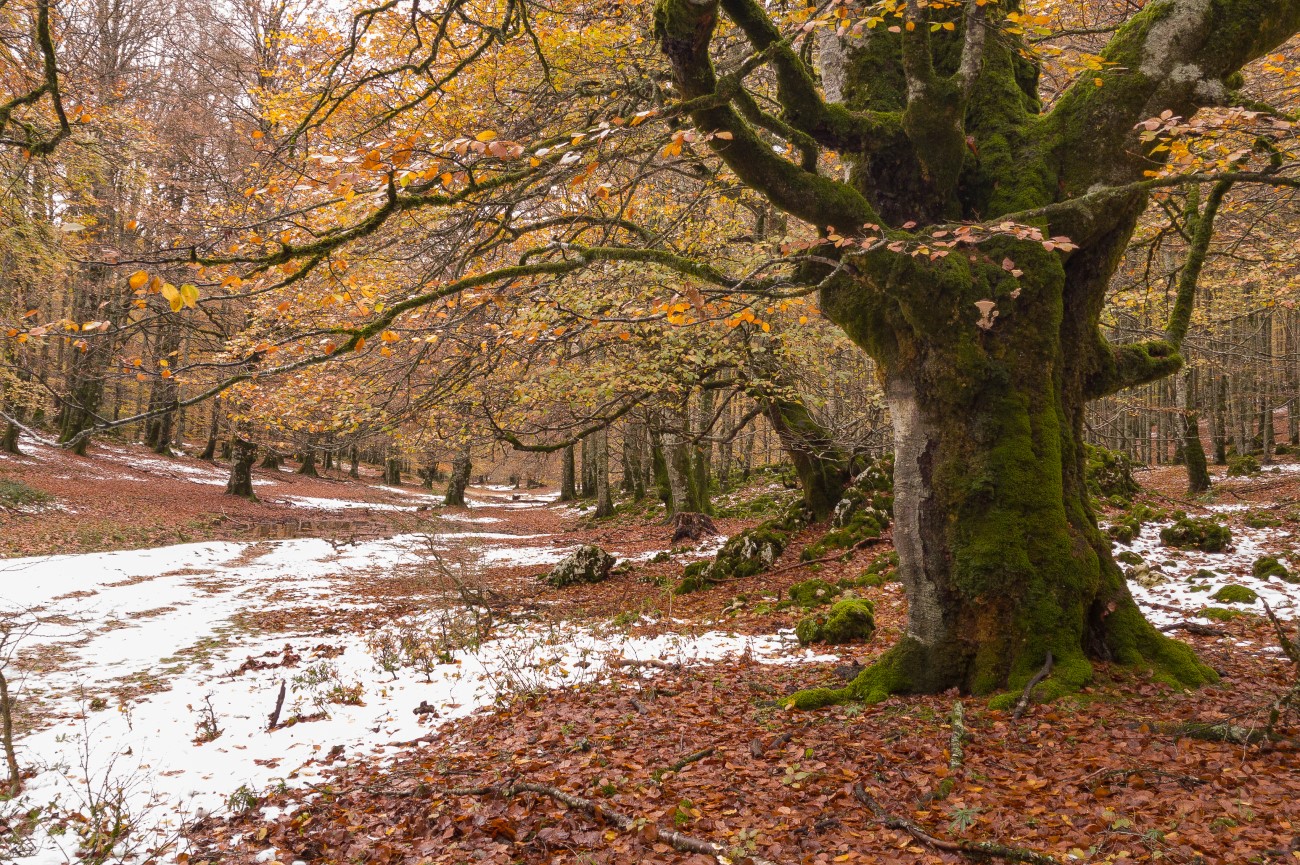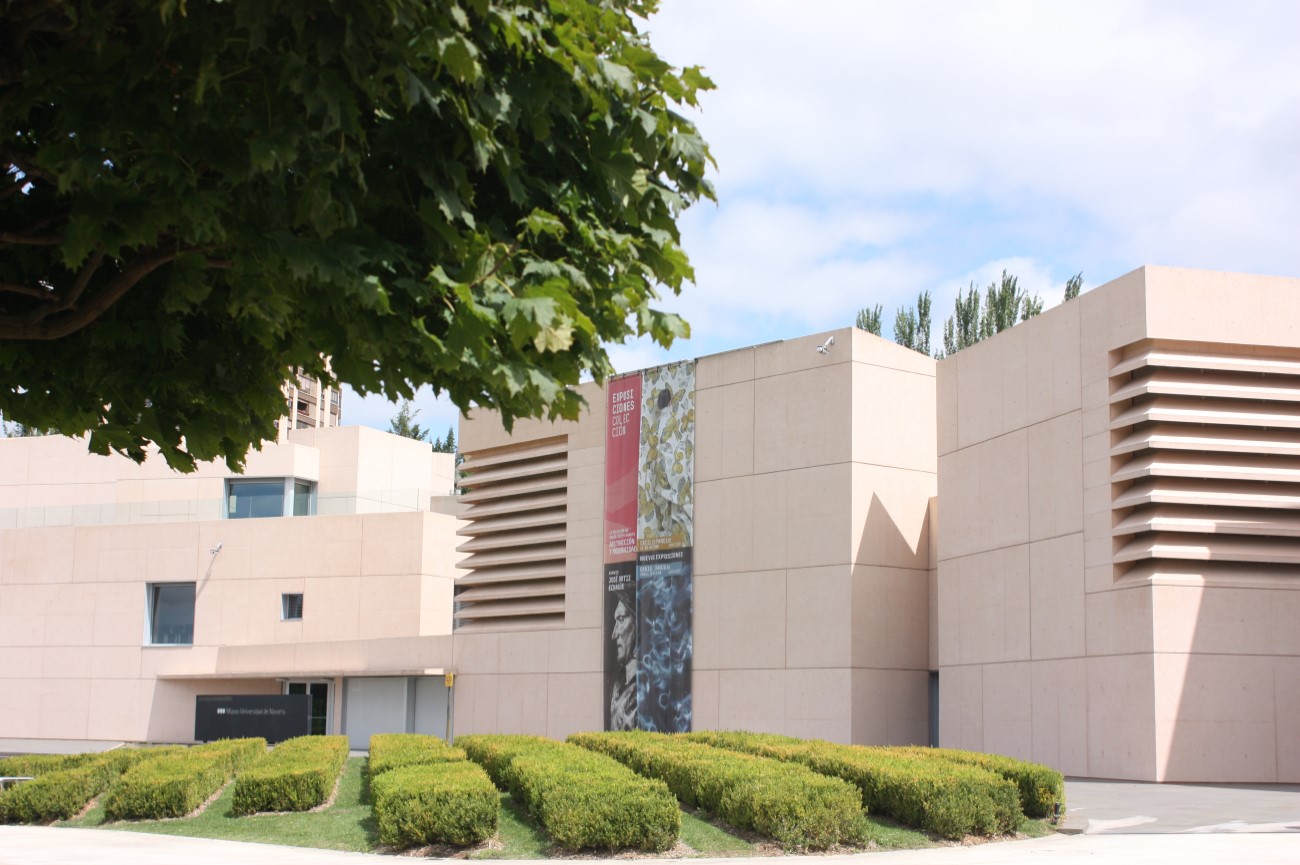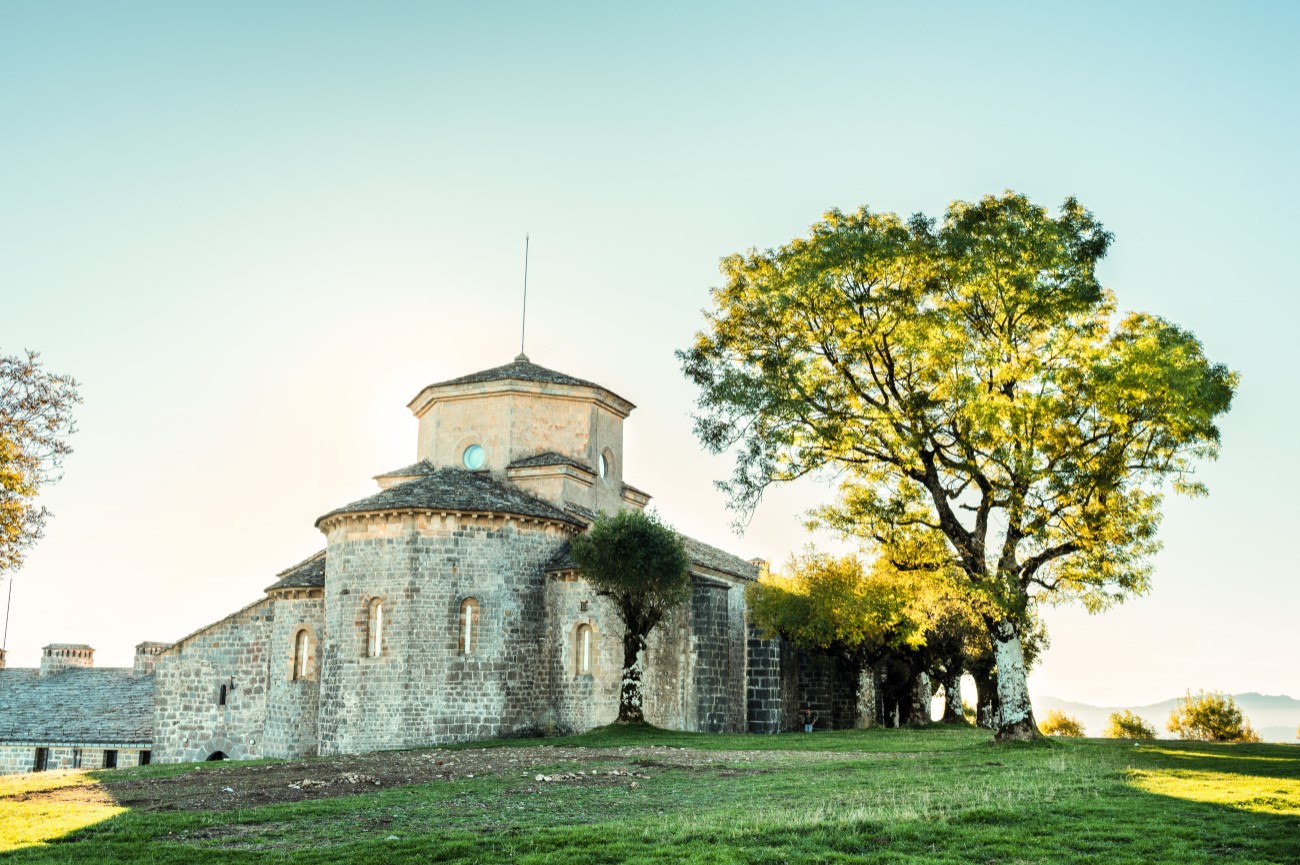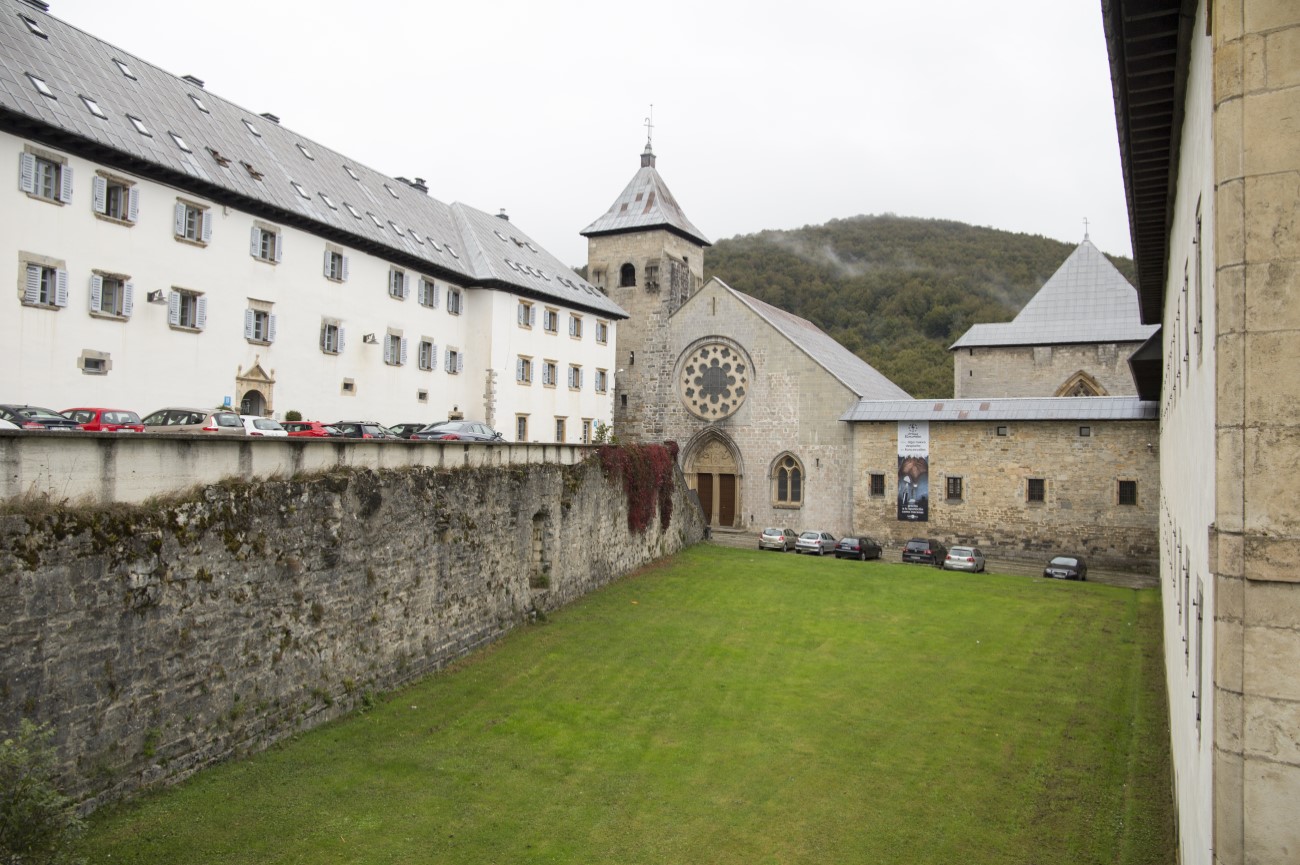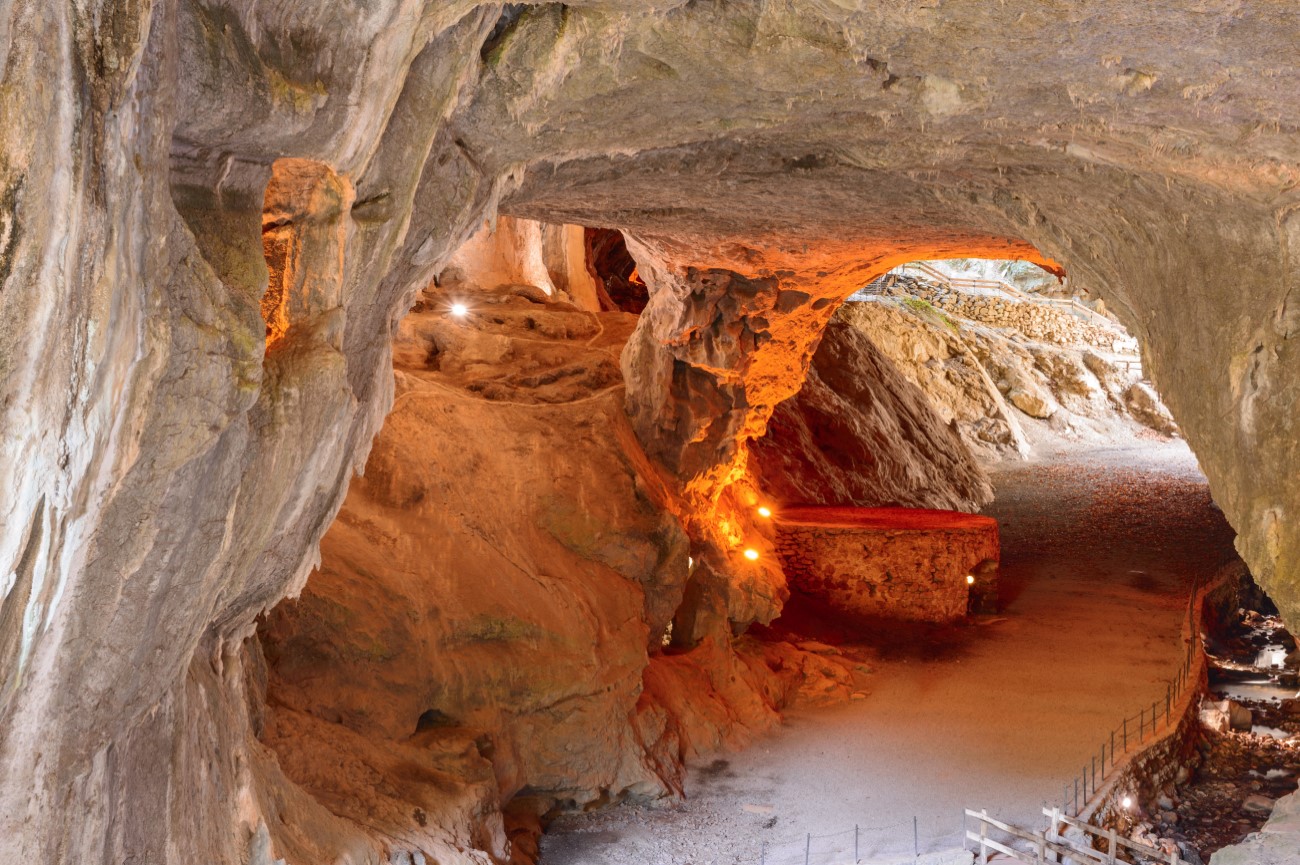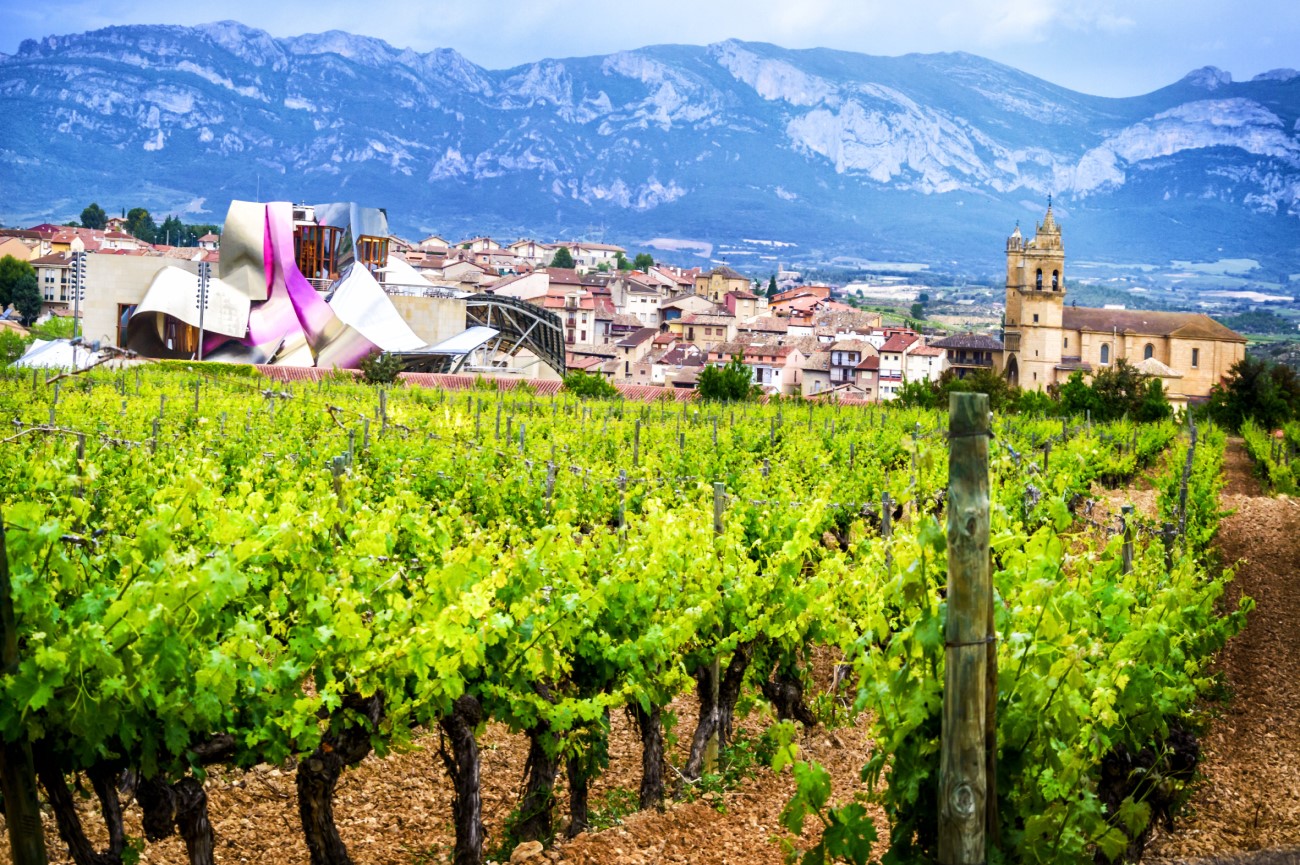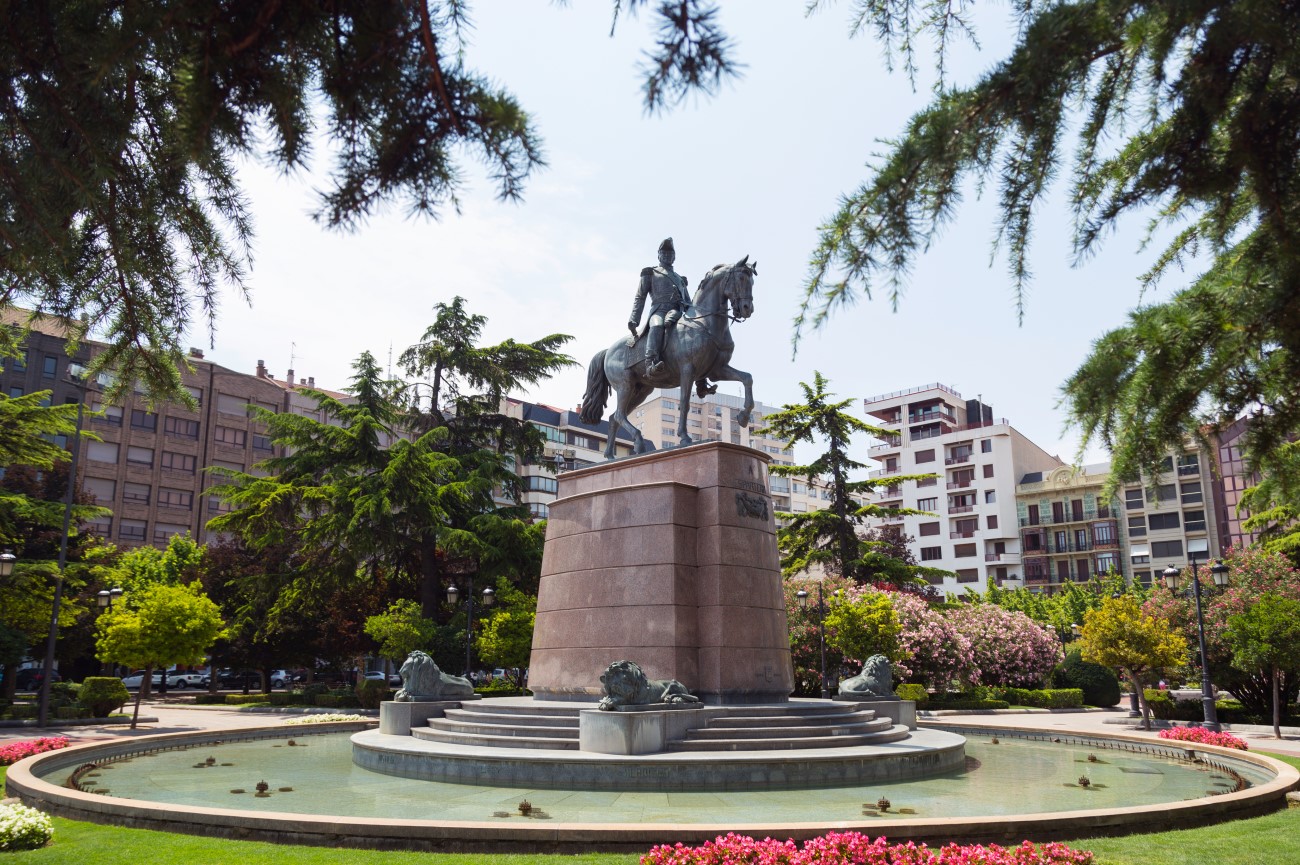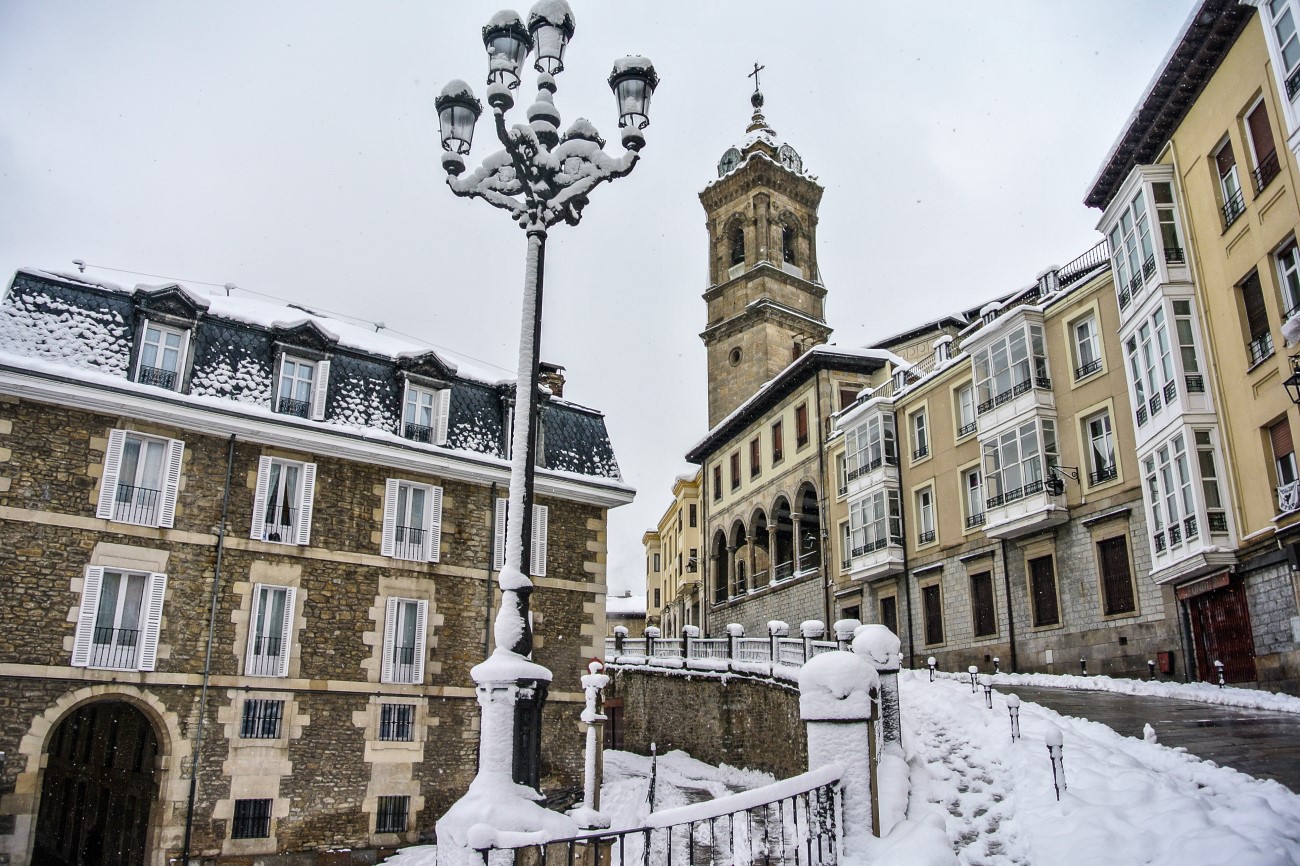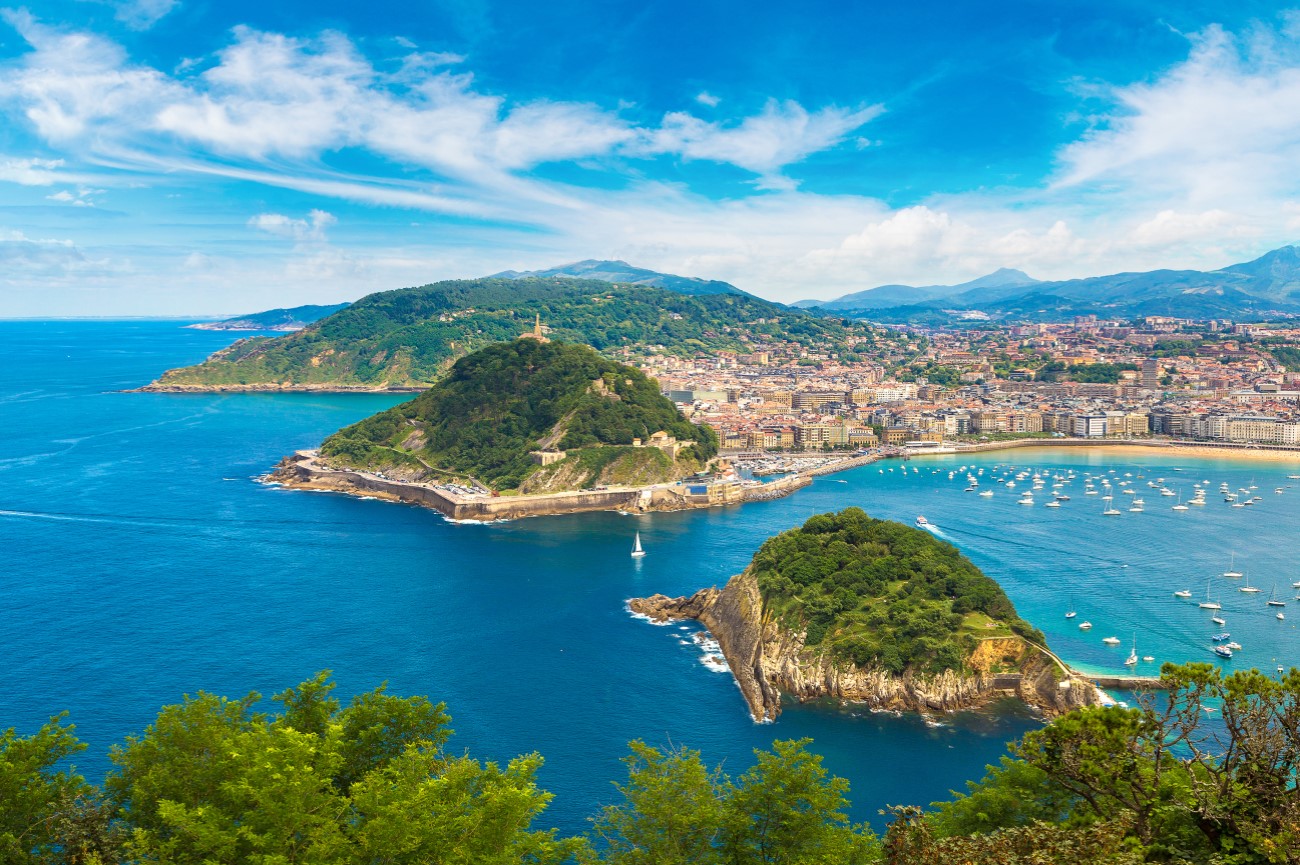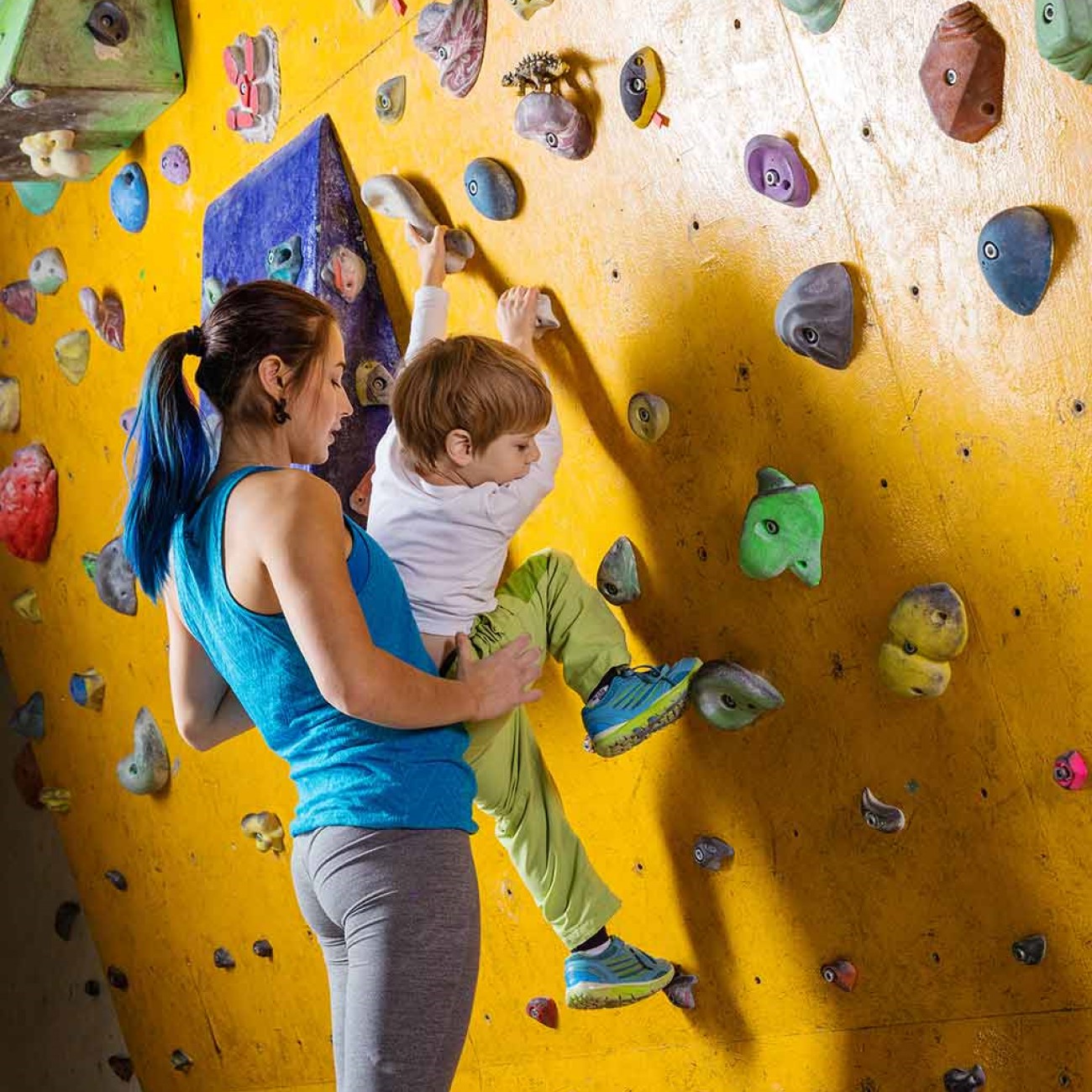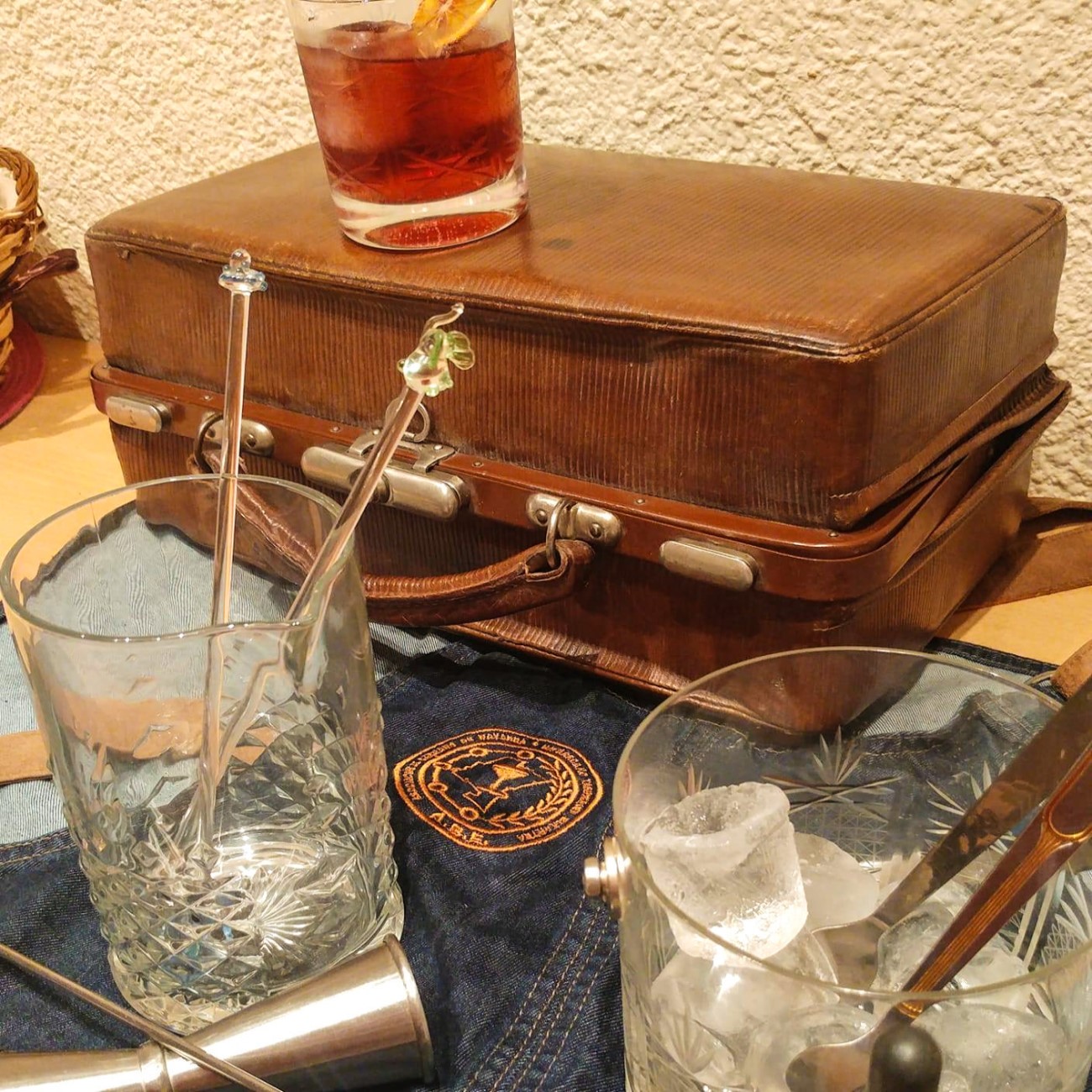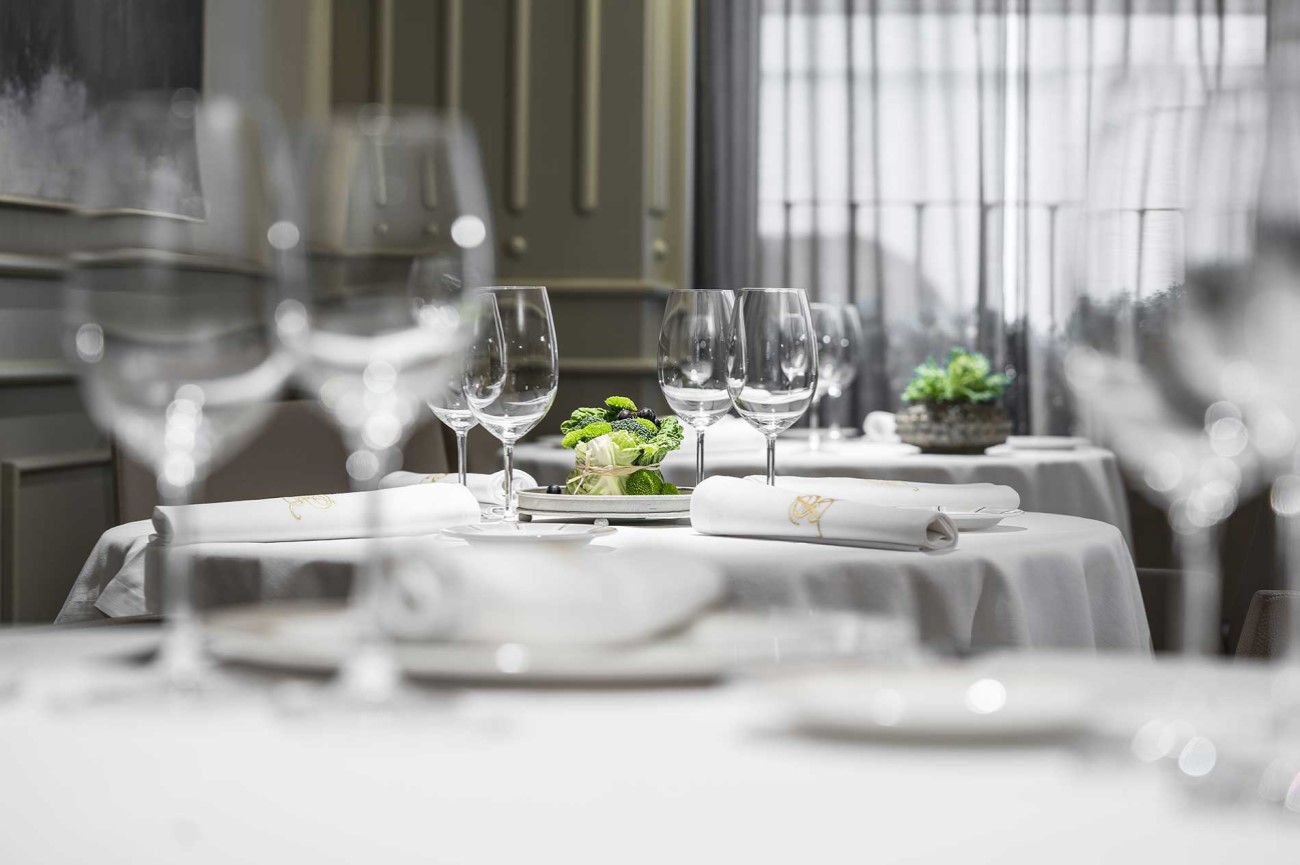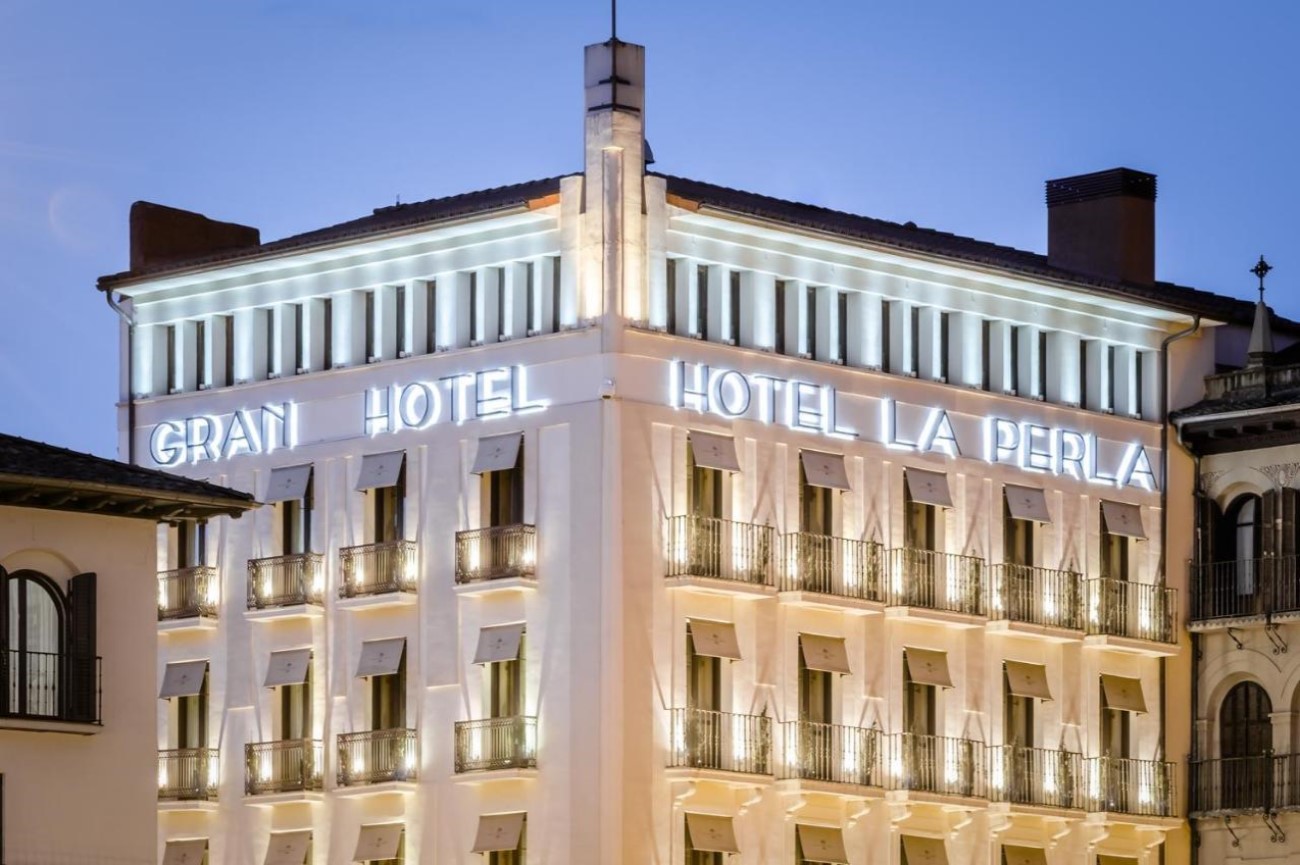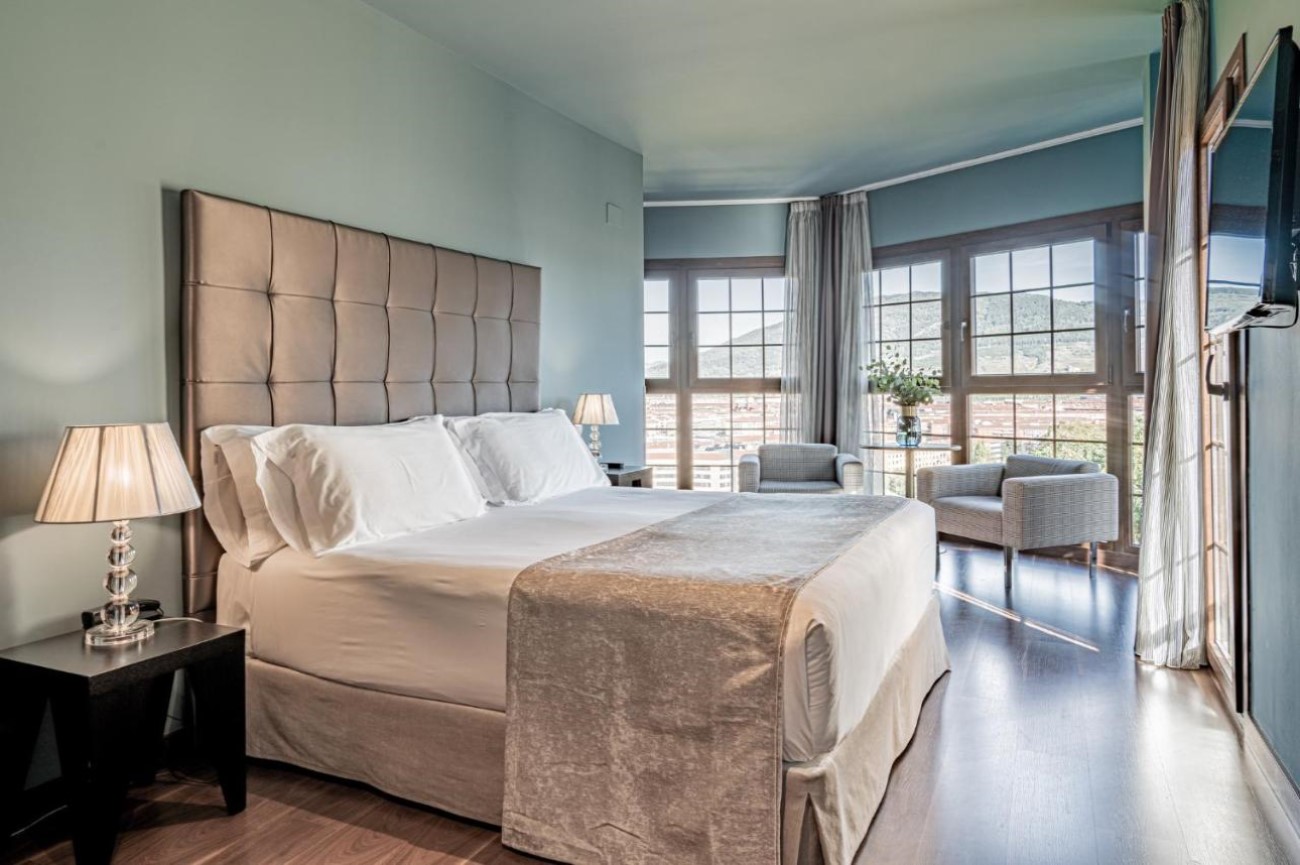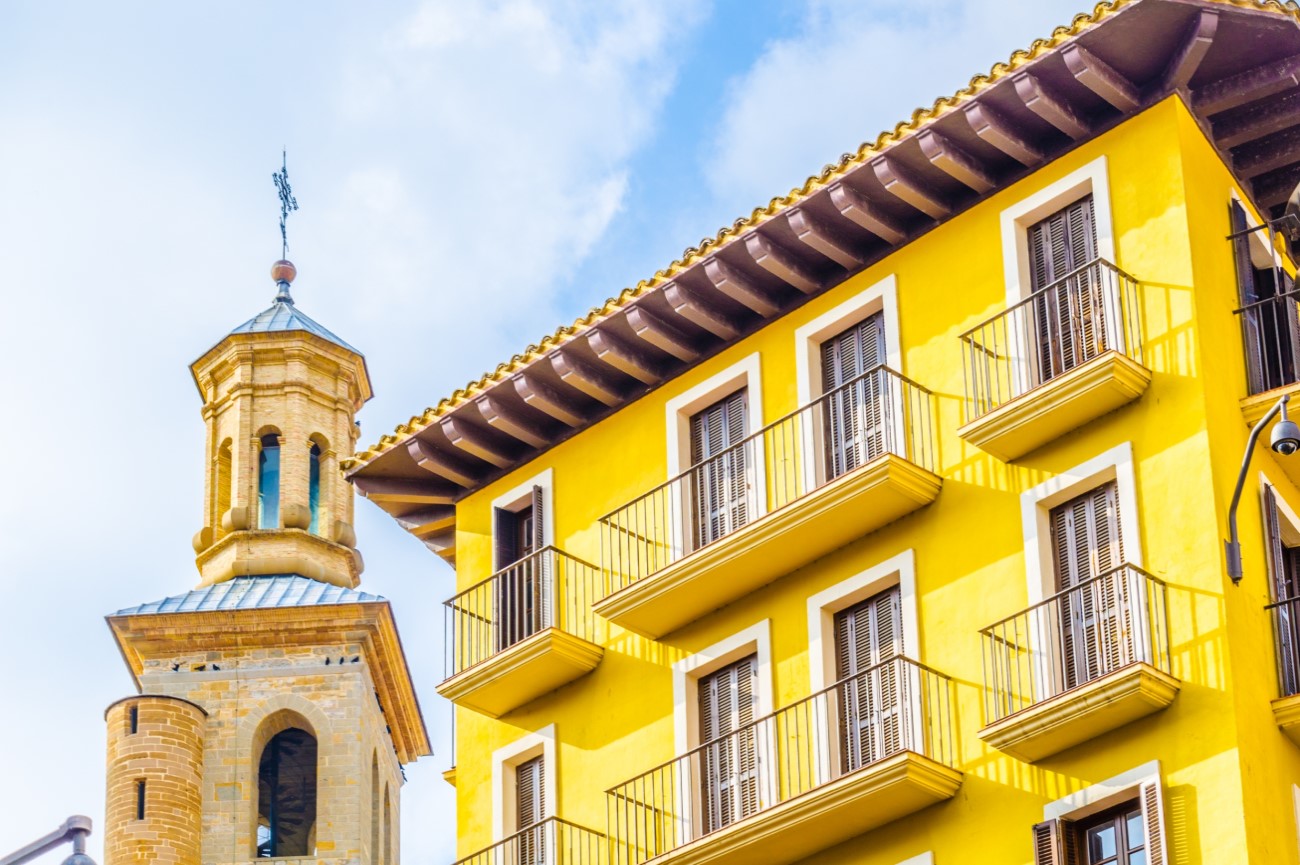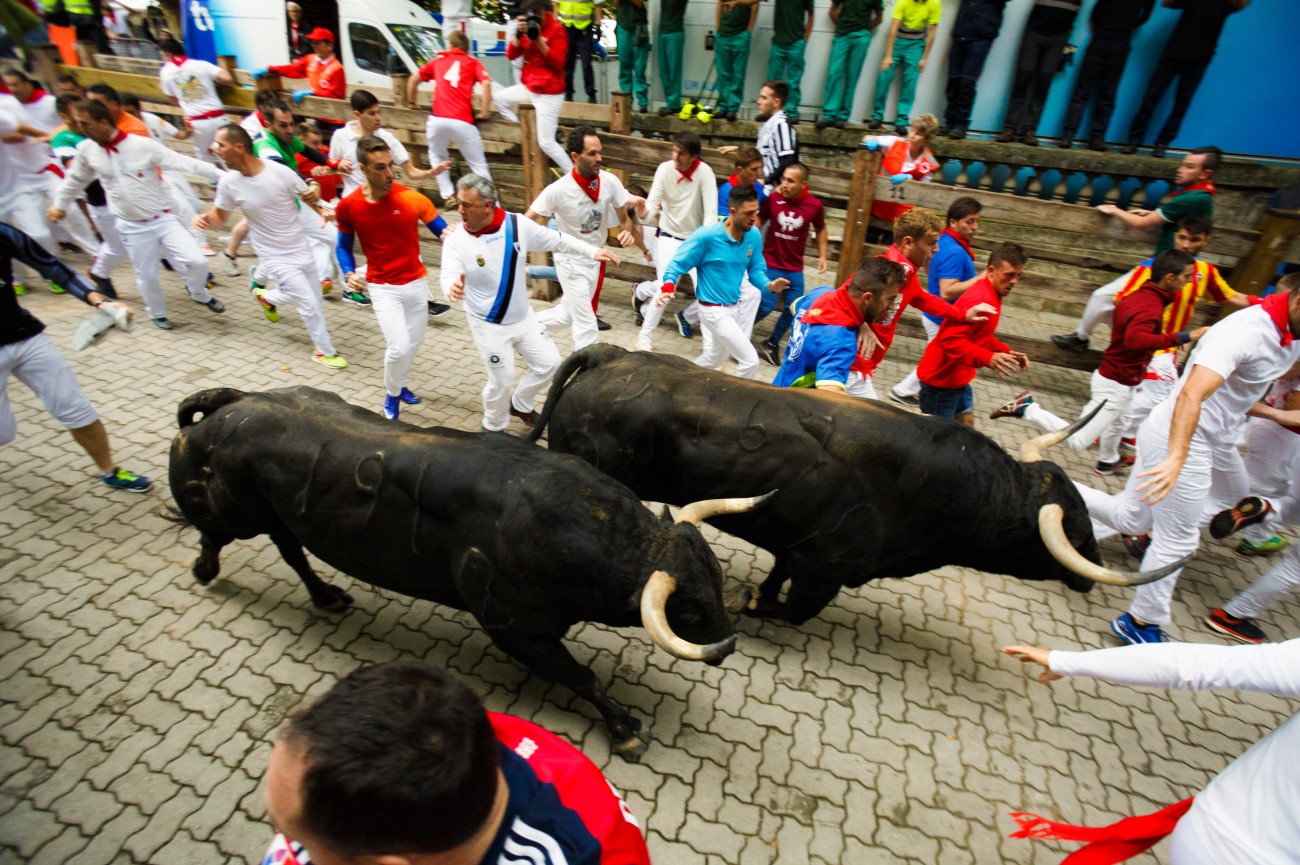Things to do in Pamplona, Spain
Pamplona is renowned for its bull-running festival, San Fermín, which attracts visitors from all over the globe. Visit this city outside of July though and you’ll encounter a much quieter atmosphere, with plenty of room to explore its medieval streets and sample the delicious food and wine. This is also the capital of the Navarra region and was once a bastion of the Roman empire.
Throughout the year, visitors can enjoy Pamplona’s lush parks and historical buildings such as the cathedral and the city’s 16th-century fortifications. Read our itinerary below to discover the best things to do in Pamplona.
One Day in Pamplona

Morning: Plaza de Toros
Start your tour of Pamplona at the Plaza de Toros. This is where you’ll find the Centro Temático del Encierro y los Sanfermines, a space dedicated to the city’s bull-running traditions. If you can’t make it to the San Fermín festival, this is a great place to learn more about it through installations that bring together the sights and sounds of the event. The Bull Ring itself is also open to visitors. Another attraction on the square is the bust of the writer Ernest Hemingway, who helped put Pamplona on the tourist map.
Palacio de Navarra
Continue walking towards the Palacio de Navarra, the seat of Pamplona’s regional government. Designed in 1840 by José de Nagusia, this three-storey building stands out with its Neoclassical façade. It’s worth coming here around noon to hear the palace’s clock play the Hymn of Navarre.
Plaza del Castillo
Just a few steps from the palace is the Plaza del Castillo. Locals often refer to this square as their living room (cuarto de estar), since it’s the social heart of the city. Through the years it has welcomed a variety of events including political demonstrations, military parades and bullfights (up until 1843). Today, people come here to enjoy a coffee at one of the cafés under the arcades. Among these, is the Café Iruña, where Hemingway supposedly wrote part of his novel The Sun Also Rises, most of which is set around Pamplona. There’s a bandstand in the middle of the square which is often used for concerts, especially during San Fermín.
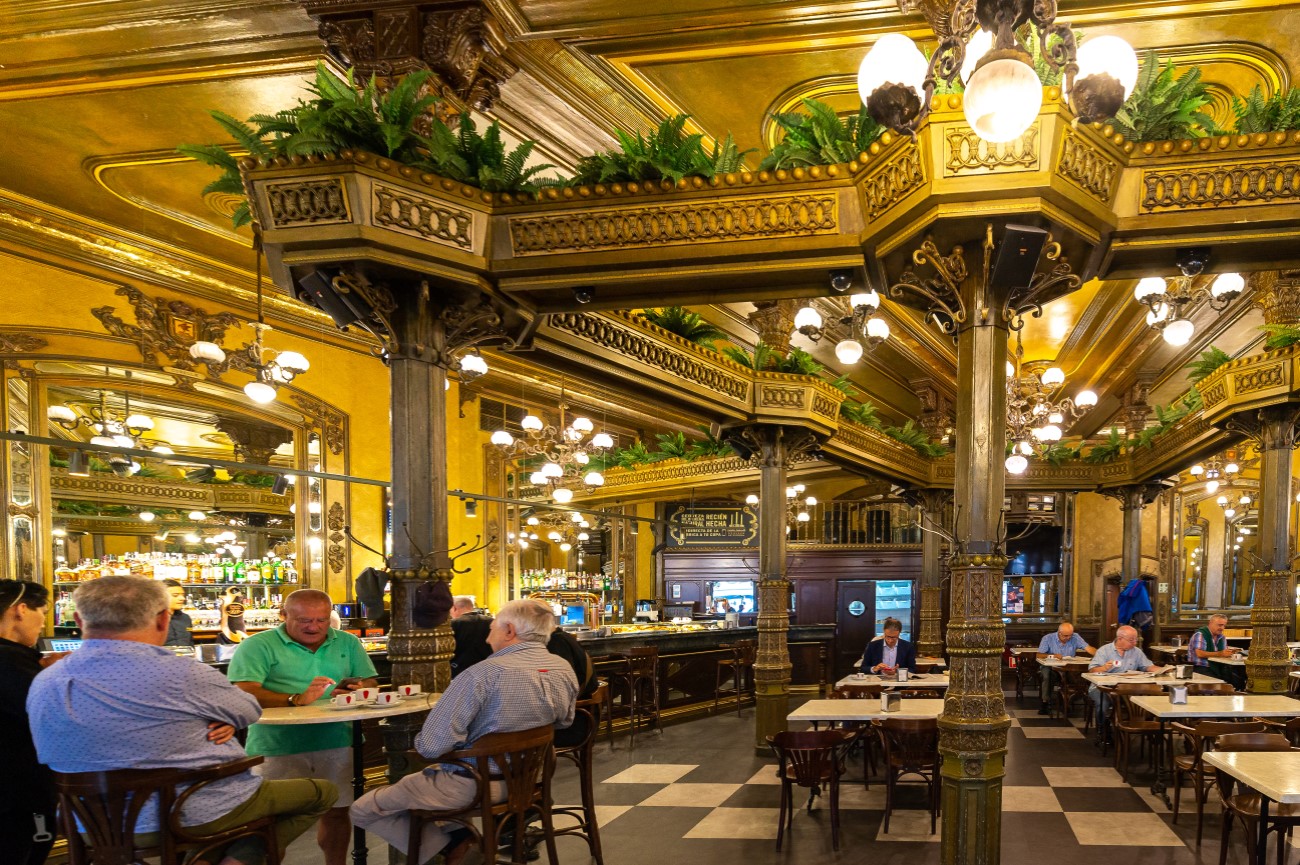 Café Iruña, where Hemingway supposedly wrote part of his novel "The Sun Also Rises", Pamplona, Spain
Café Iruña, where Hemingway supposedly wrote part of his novel "The Sun Also Rises", Pamplona, Spain
Old Town
Continue exploring the city’s old town, passing through the picturesque Plaza de la Compañía. Also known as Casco Viejo, this area is lined with narrow cobbled streets and striking tall buildings. Surrounding the district are the city walls established between the 16th and 18th centuries. It’s around here you’ll find the old Citadel built as a military fortress to protect the city against invaders. These days it’s the stage of battle reenactments and concerts. You can learn more about these structures at the Pamplona City Walls Interpretation Center housed inside the Fortín de San Bartolomé.
Catedral de Santa María
Next, head to Calle Estafeta for some souvenir shopping. At the end of the street, you’ll find the town hall and the imposing Catedral de Santa María. Established between the 14th and 15th century, this church combines a variety of architectural styles. It features a Gothic cloister, Renaissance interior motifs and a Neoclassical façade. The church also houses the Diocesan Museum, which showcases religious artefacts collected from churches across the Navarra region.
Mirador del Caballo Blanco
From the cathedral, take a walk along the Ronda del Obispo Barbazán until you reach the Mirador del Caballo Blanco. Here you can enjoy some of the most incredible views in the city, overlooking the Arga river and the mountains. There’s an outdoor bar, where you can stop for a drink and relish the views.
Close to the viewpoint is the Puente de la Magdalena, a bridge of Romanesque origin and the second oldest structure over the Arga River. It’s also the main entry point to the city for pilgrims walking the Camino de Santiago.
Morning - Pamplona Tour Map
Afternoon: Museum of Navarra
To learn more about Pamplona and the Navarra region in general,
you should visit this museum. Set inside a former hospital, the Museum
of Navarra showcases fragments from Pamplona’s earliest Romanesque
cathedral. These include elaborately carved capitals that stood atop the
church’s cloister. Other highlights are the mosaic of the Triumph of
Bacchus, dating back to the 1st century and a Moorish ivory chest from
the 1000s.
Close to the museum you can find the Archivo Real y General de Navarra, an archival building set inside a former royal palace, and the charming basilica of San Fermín de Aldapa.
Plaza Consistorial
Just a few steps from the museum is the Plaza Consistorial. Every year, during the San Fermín festival, this square comes alive with the ceremonial fireworks. The square is also home to many historical buildings, including the City Hall, which dates back to the 15th century. The building was renovated later on and the façade today features a combination of late Baroque and Neoclassical styles.
Iglesia de San Saturnino
Before becoming a city, Pamplona was made up of three neighbouring “burgos”, aka boroughs. They didn’t really get along with each other and this church is proof of that. Built around the 13th century as part of the San Cernín parish, the Iglesia de San Saturnino resembles a fort because it had a defensive role during the conflicts between neighbourhoods. Those days are long gone and today the church and its towers are one of the city’s most photographed sites. Its clock tower is especially famous for counting down the start of the San Fermín festival.
Plaza San Francisco
Another square worth passing through is the Plaza San Francisco. This square was created at the start of the 20th century, after the destruction of a few buildings that were located here, including the Royal Council, the Royal Prisons and the San Francisco Convent. Today, visitors are drawn to the large red mansion, which houses the General Library of Navarra. You’ll also find a bronze sculpture of San Francisco de Asís and remains of the city’s medieval wall.
San Nicolás Church
From the square, it’s only a few minutes down to the Iglesia San Nicolás. Built in the 13th century, this medieval church stands out with its defensive watchtower and turrets. There were originally three towers here, but there’s only one remaining today. It’s worth checking the Baroque organ inside, considered one of the best in the city.
La Ciudadela
Our tour continues at the Ciudadela. Located on the outskirts of the city, this stronghold was built between the 16th and 17th century to protect Pamplona against French invasions. It has a distinctive star-shaped design which has been mostly preserved. The bastions are currently used for art exhibitions and concerts. After visiting the fort, you can wander around the surrounding Parque de la Vuelta del Castillo, a famous lookout for the San Fermín fireworks.
Pamplona Parks and Gardens
Pamplona is one of the greenest cities in Spain and as result, there’s no shortage of parks and gardens to explore. After a busy day of sightseeing, you can relax at one of these incredible green spaces. We already mentioned the park around the citadel, but there are many more worth seeing. The Taconera Gardens are part of the city’s oldest park, the Parque Media Luna is ideal for a romantic stroll and Parque Yamaguchi will take you on a trip to Japan. There’s also Pamplona’s Riverside Park which stretches for nearly a million square metres.
Afternoon - Pamplona Tour Map
Other Things to See in Pamplona
- Jorge Oteiza Museum Foundation: You’ll find this art foundation in the town of Alzuza, about 10 kilometres north of Pamplona. It houses the work of the famous Basque sculptor Jorge Oteiza, including the pieces that earned him the Grand Prix for Sculpture at the São Paulo’s Biennial. The museum’s hilltop location also makes it the perfect spot to capture Pamplona in the distance.
- Urbasa Andía Natural Park: Head west from Pamplona and you’ll soon reach the Urbasa Andía Natural Park. The park gets its name from the two mountain ranges that meet here: Urbasa and Andía. It features lush walking paths as well as stunning natural sites such as gorges, crystal clear pools and waterfalls.
- Museo Universidad de Navarra: On the outskirts of the city, near the Yamaguchi park is the Museo Universidad de Navarra. This contemporary art museum houses a series of paintings by renowned artists such as Pablo Picasso, Mark Rothko, Wassili Kandinsky and Eduardo Chillida. There are also rare photos from the 19th century, donated by the University of Navarra.
Day Trips From Pamplona
- Navarran Pyrenees: As part of Navarra, Pamplona is very close to the Navarran Pyrenees. These are the western section of the large mountain range that separates the Iberian Peninsula from France. It’s a great place for hiking, passing through lush forests in Bertiz and Irati and gorges at Lumbier or Arbaiun. There are also historical monuments worth capturing such as the Sanctuary of Saint Michael of Aralar or the Collegiate of Roncesvalles.
- Zugarramurdi: Inside the Navarran Pyrenees lies Zugarramurdi. This small town is famous for its caves. The Cuevas de Las Brujas (Caves of the Witches) were supposedly the site where witches were tortured back in the 17th century, and also of pagan rituals. Today, visitors are welcome to explore this majestic site, located a 400m-walk away from the town centre.
- La Rioja: About 100km southwest of Pamplona, you’ll find the vineyards of La Rioja. Wine has been produced here since the Phoenicians settled in the region more than 2,000 years ago. It’s worth exploring the capital Logroño and visiting its local cellars, known as bodegas. There are also many wineries in the surrounding countryside.
- Logroño: Logroño is the perfect base to explore the Rioja wine region. You can spend a day here exploring picturesque squares and visiting churches like the Concatedral de Santa María de la Redonda. The city is also famous for its cuisine, with pintxo bars lining the Calle Laurel.
- Vitoria-Gasteiz: From Pamplona, head west towards Vitoria-Gasteiz. The city is the capital of the Basque Country, home to a stunning medieval quarter where you’ll find the Gothic Catedral de Santa María. Other highlights include the Plaza de la Virgen Blanca and the Church of San Miguel.
- San Sebastián: Drive one hour north from Pamplona and you’ll soon reach San Sebastián. Once a summer getaway for Spanish royalty, this coastal city still attracts visitors with its golden beaches and crystal clear waters. The city is also a world-renowned culinary spot home to almost a dozen Michelin-star restaurants.
Top Things to Do With Kids in Pamplona
There
are several things to do with kids in Pamplona. Start by exploring the
city centre and then climb up the cathedral for incredible views over
the city. From there you can continue on to the Plaza del Castillo for
some chocolate and churros or try the artisanal caramels at Garrarte in
Calle de la Estafeta. Spend the rest of the day exploring one of
the city’s parks. The Yamaguchi park is home to a Planetarium, while
the Taconera gardens have a small zoo with deers and peacocks, as well
as an area with swings.
Families can also walk or cycle along the river at the Arga River Park or hire a canoe. Other attractions nearby include the Rocópolis climbing centre in Berrioplano, the trampolines at Salting Iruña and the ice rink in Huarte.
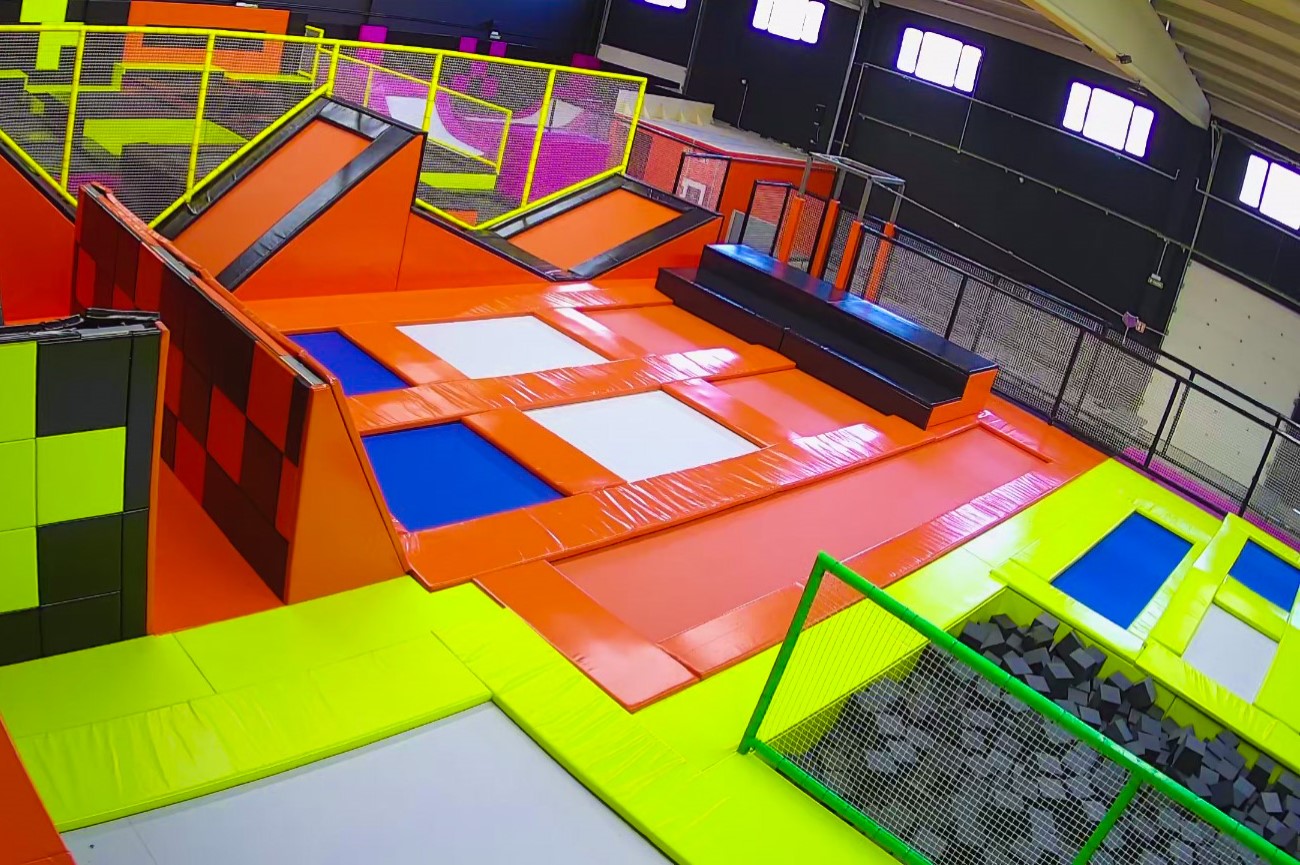 The trampolines at Salting Iruña, Spain
The trampolines at Salting Iruña, Spain
Where to Eat in Pamplona
Pamplona’s cuisine shares a few similarities with Basque food, but it also has its own local dishes. Asparagus grow here and are often featured on the menu either grilled or added in salads and stews. When it comes to pintxos, one of the staple dishes is the txistorra, a spice sausage from the Basque region. If you fancy doing a pintxos crawl, Calle San Nicolás is your best bet. On Thursdays, many bars offer the Juevintxo, which means that when you order a beer you’ll get a pintxo for a discounted price. Don’t leave without trying the local liqueur Pacharán, a red digestif flavoured with sloe fruits. Discover the best places to eat in Pamplona below:
- Bar Gaucho: Close to Plaza del Castillo, Bar Gaucho serves a variety of delicious and creative pintxos. The menu includes dishes that you don’t usually find in other tapas bars such as sea urchins and the huevo trufado (truffled egg).
- Rodero: What started as a family business more than 40 years ago has now become one of the city’s Michelin-star restaurants. Chef Koldo Rodero runs the show here, presenting tasting menus that include dishes such as potato and truffle omelette and the lobster lasagna.
- Restaurante Europa: This Pamplona restaurant has had a Michelin star since 1993. The contemporary dining rooms are the setting for the culinary delicacies created by the Idoates family. Highlights include the roasted pigeon and the artichokes confit with roasted Norway lobster.
- Herriko Taberna: This traditional tavern is located only a few steps away from the cathedral. Here you can enjoy delicious Basque-style homemade dishes. There are several menus on offer, including a vegetarian version.
Where to Stay in Pamplona
- Hotel La Perla (5 stars): If you’re looking for a luxurious stay in Pamplona, this five-star hotel is your best bet. Through the years, La Perla has welcomed many famous personalities including Ernest Hemingway, Charlie Chaplin and Orson Welles. The 44 rooms are inspired by these esteemed visitors and most of them overlook the Plaza del Castillo. Facilities include a restaurant and a lounge with a piano.
- Pamplona Catedral Hotel (4 stars): As the name suggests, this hotel is only a few steps away from the cathedral. Its privileged location makes it the ideal base to explore the city’s main attractions. The hotel occupies a former convent now converted into a modern facility. Guests have access to a bar and a restaurant and can also rent bikes at the reception.
- Hotel Tres Reyes (4 stars): You’ll find this four-star hotel on the edge of the Taconera Gardens. It features 160 rooms, including options for families. The restaurant on-site serves a mix of dishes from Navarra and the Basque Country. Other facilities include a seasonal outdoor pool, a jacuzzi and a fitness room.
Best Time to Visit Pamplona
When it comes to weather, the best time to visit Pamplona would be spring or autumn. The temperatures are mild at this time of year and the city is often less crowded. It’s also an ideal time to enjoy the city’s parks with the flowers blooming or the leaves falling, depending on the season. Summer is a popular time for tourists, especially around July during the San Fermín festival. If you want to experience the city at its liveliest, you can’t miss this event.
Pamplona Festivals
- Festival of San Fermín: Between the 6th and the 14th of July, Pamplona draws visitors with this thrilling annual festival. San Fermín is synonymous with the running of the bulls, which has been taking place here for more than 200 years. Visitors rent out flats along the Calle de la Estafeta for the best views over the run and some even participate in it. The festivities start at the City Hall with a firework launch and then take over the streets with parades and music performances.


